


NORTH BY








Donor deficit
Through advocacy and drives, Northwestern’s University Blood Initiative chapter aims to combat the national blood shortage. | pg. 29
The Pioneer
How Chris Collins transformed Northwestern basketball. | pg. 38












Donor deficit
Through advocacy and drives, Northwestern’s University Blood Initiative chapter aims to combat the national blood shortage. | pg. 29
The Pioneer
How Chris Collins transformed Northwestern basketball. | pg. 38
Rock out with Northwestern’s graduating bands.| pg. 50
PRINT MANAGING EDITOR Audrey Hettleman
ASSISTANT MANAGING EDITOR Katie Keil
EDITORS-AT-LARGE Jimmy He, Julianna Zitron
COPY CHIEF Jenna Anderson
SENIOR PREGAME EDITORS Indra Dalaisaikhan, Sarah Lin, David Sun
ASSISTANT PREGAME EDITORS Jessica Chen, Gabby Shell
SENIOR DANCE FLOOR EDITORS Jenna Amusin, Maya Krainc, Sarah Lonser, Mitra Nourbakhsh
ASSISTANT DANCE FLOOR EDITORS Eleanor Bergstein, Sarah Serota
SENIOR FEATURES EDITORS Sam Bull, Emma Chiu, Noah Coyle, Andrew Katz
ASSISTANT FEATURES EDITOR Shae Lake
SENIOR HANGOVER EDITORS Mya Copeland, Bennie Goldfarb, Natalia Zadeh
CREATIVE DIRECTOR Allison Kim
ASSISTANT CREATIVE DIRECTOR Jessica Chen
DESIGNERS & ILLUSTRATORS Grace Chang, Leila Dhawan, Bennie Goldfarb, Iliana Garner, Laura Horne, Abigail Lev, Sammi Li, Heidi Schmid, Xiaotian Shangguan, Jackson Spenner, Allen You
PHOTOGRAPHERS Bennie Goldfarb, Elisa Huang, Joyce Huang, Elena Lu, Angeli Mittal, Julia Lucas, Sarah Serota, Lavanya Subramanian, Allen You
FREELANCERS
Mila Brandson, Hannah Cole, Leila Dhawan, Yong-Yu Huang, Zoe Kulick, Jackie Li, Stephanie Markowitz
COVER DESIGN BY ALLISON KIM
COVER PHOTO BY ALLEN YOU
EDITOR-IN-CHIEF Christine Mao
EXECUTIVE EDITORS Conner Dejecacion, Astry Rodriguez
MANAGING EDITORS Mya Copeland, Ava Hoelscher, Sammi Li
ASSISTANT MANAGING EDITOR Gideon Pardo
DIVERSITY, EQUITY AND INCLUSION EDITORS Sammi Li, Yasmin Mustefa
NEWS EDITOR Ayse Ozturk
POLITICS EDITOR Jezel Martinez
ASSISTANT POLITICS EDITOR Rafaela Jinich
ENTERTAINMENT EDITOR Ariel Gurevich
LIFE & STYLE EDITOR Chloe Que
SPORTS EDITOR AJ Anderson
ASSISTANT SPORTS EDITOR Mariana Bermudez
INTERACTIVES EDITOR Manu Deva
ASSISTANT INTERACTIVES EDITOR Annabelle Sole
FEATURES EDITORS Darya Tadlaoui, Sara Xu
ASSISTANT FEATURES EDITOR Yong-Yu Huang
OPINION EDITOR Mya Copeland
CREATIVE WRITING EDITOR Jillian Moore
AUDIO & VIDEO EDITORS Jessie Chen, Indra Dalaisaikhan
ASSISTANT AUDIO & VIDEO EDITOR Dallas Thurman
PHOTO EDITORS Elisa Huang, Yujin Tatar
GRAPHICS EDITOR Rachel Yoon
ASSISTANT GRAPHICS EDITORS June Woo, Diane Zhao
SOCIAL MEDIA EDITORS
INSTAGRAM EDITORS Ashley Kim, Sara Xu
TIKTOK EDITORS Ashley Kim, Sara Xu
TWITTER EDITOR Katie Tsang
PUBLISHER Stephania Kontopanos
AD SALES TEAM Indra Dalaisaikhan, Leila Dhawan, Jackson Spenner, David Sun, Judy Zeng
EVENTS CHAIR Grace Chang
DIRECTOR OF ALUMNI RELATIONS Jessica Chen
For many, spring signifies a period of rebirth and growth. As flowers and trees bloom, bunnies, squirrels, robins and hammocks have overtaken the Northwestern campus.
During Spring Quarter, North by Northwestern magazine blossomed from a series of pitches and sketches to a 64-page edition. Week after week, our editors resisted the temptation to enjoy the warm weather, choosing instead to devote hours to exploring niche corners of our community.
Our Pregame section takes you behind the scenes of the annual UNITY fashion show and meets the Northwestern Formula Racing team at the finish line of race car construction. In Dance Floor, we go back in time through an archival retrospective on Northwestern women’s athletics and a professor’s material history laboratory.
In Features, we talk to musicians taming performance anxiety with beta blockers and investigate a growing trend of political disillusionment among college students. We also look into men’s basketball head coach Chris Collins’s past, present and future — and basketball legend Coach K weighs in. Our cover story, “The farewell tour,” highlights student bands and their senior performers who make time for a creative outlet as graduation looms.
This quarter, I encouraged the staff to expand our reach beyond campus confines. Throughout the issue, you’ll find stories that focus on Evanston, from highlighting a secondhand craft store to examining the Mitchell Museums’s transformative past few years — plus, our Hangover editors reflect on “meaningful” spots across the city.
I have to give my fantastic staff their flowers. This magazine would not have been possible without the hard work and dedication of these editors, designers and writers. I could not have asked for a better group of people to surround myself with this spring.
As you read this magazine, treat each anecdote, source and statistic like its own flower in our community garden, and our magazine as a bountiful bouquet. I hope our coverage encourages you to expand your understanding of Northwestern and Evanston, as it did for me.
Sincerely, Audrey Hettleman
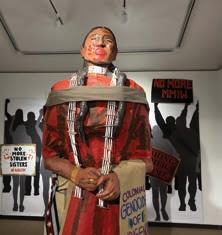


Mixology 101
Campus quitters
RaceCats
Cut and strut
No creativity wasted
NUDM’s new moves
A restorative reimagination
Funding the future
Play like a girl
Digging deeper
Donor deficit
Blocking out the noise
The Pioneer
Disillusioned generation
The farewell tour
XOXO, Chit-chat Wildcat
Unpacking my spiritual baggage
The aquatics center (of attention)
The Hangover Herald
Oh, the places we’ve gone!
Mixology 101
Campus quitters
RaceCats
Cut and strut
06 07 08 10 12
No creativity wasted

WRITTEN
BY
PREGAME EDITORS // DESIGNED BY HEIDI SCHMID // PHOTOS BY ELENA LU
Tired of chugging boring old orange juice, 2% milk and fountain sodas with your meals? Let Pregame help you spice up your feasting experience with recipes for delectable, non-alcoholic drinks you can mix in the dining halls.


• 1/2 cup apple juice
• 1/4 cup orange juice
• 1/4 cup cranberry juice
• Splash of 2% milk


• 1/2 cup Sprite
• 1/2 cup lemonade
• Splash of soy milk
• Ice


Spending too much money on Ume Tea? Learn how to make your own on a budget at Plex! Hong Kong-style milk tea is known for its smooth texture and strong flavor from carefully steeped and pulled tea leaves. You can recreate this iconic drink in less than five minutes — just don’t let your pasta-stirring stick boil!
I haven’t had a Pink Drink since middle school, so if you’re a devotee to the original Starbucks version, don’t come for me. That being said, I think this is a pretty good knockoff of the real thing.
Adding ice and Special K strawberries (without the cereal) is optional.
Rise and shine with a Sunrise Sparkle as you trudge into Allison for your mid-afternoon breakfast! As you sip and savor the refreshing taste, allow yourself to be transported to a place as distant as your memories from last night. Remember: When life hands you a tequila sunrise, turn it into a Sunrise Sparkle and face the day with a smile — or at least a slightly less painful grimace. Cheers!
Adding lemon wedges and mandarin oranges is optional.
Smooth and creamy, this Milkis knockoff tastes exactly like childhood with a fizzy kick of motherly disapproval. Although I’m now a fullfledged adult who can eat as many sweets as I want, I’m forced to treat myself to the dining hall alternative. A single can of Milkis retails for far too much for far too little liquid (screw you, inflation).
Some people like to start their day with a blend of spinach, cucumbers and avocados. Frankly, that’s nasty. This drink gives off the same impression: You’re a young adult who’s on top of their game — healthy, thriving and glowing. Despite the unruly sugar content, this green juice alternative doesn’t taste too sweet and has a refreshing, citrusy aroma.

• 3/4 cup
Bigelow’s English Breakfast Tea (tea bags)
• 1 sugar packet
• 1/4 cup half-and-half
• Plex East ice cream


• 1/3 cup cranberry juice
• 1/3 cup Sprite
• 1/3 cup orange juice
• Ice


• 1/3 cup
Coca-Cola
• 1/3 cup Sprite
• 1/3 cup Powerade
• Ice

WRITTEN BY
HANNAH COLE // DESIGNED
BY
SAMMI LI

Have you ever showered in Mudd Library on hour 17 of midterm studying and thought, “This is rock bottom, should I drop out of Northwestern?” If this has crossed your mind, you are in good company.
According to Forbes, over 1 million people drop out of college each year. However, leaving college does not prevent former students from reaching success. Take a look at these famous Northwestern dropouts who broke the mold, avoided a career in consulting and made the most of their talents (and for some, their nepo baby status).
Model Cindy Crawford attended Northwestern in 1984. After graduating as valedictorian of DeKalb High School in Illinois, Crawford planned to study chemical engineering.
However, she had already found her start in modeling. In fact, according to The Daily Northwestern, she spent her first midterm exam period modeling in Jamaica. The engineer-in-training

dropped out after three months, struggling to juggle her burgeoning career and college life.
“After you have been out on your own and attended black-tie affairs, it’s difficult to go back to kegs in bathtubs,” Crawford said in an interview with The Daily in 1988.
Despite dropping out, Crawford kept her school spirit alive, dancing among students at Dance Marathon in 1990. The purple pride clearly never fades.
Best known for Bugsy, Bonnie and Clyde and the La La Land versus Moonlight Oscars fiasco in 2017, actor and producer Warren Beatty enrolled at Northwestern in 1955. Beatty was a student in the School of Communication and an active participant in school productions, including the 1956 Waa-Mu Show, Silver

Jubilee, and the musical Fashion ’56. Though Beatty left in 1957 to pursue acting professionally in New York City, the School of Communication still lists him as a notable alumnus. Even if you drop out, kids, Northwestern might still use your name to boost its fame.
ZOOEY DESCHANEL
Like Crawford, Zooey Deschanel began her rise to stardom before setting foot in Evanston. In her senior year of high school, she debuted in the movie Mumford alongside Martin Short. She joined Northwestern as a theatre major in 1998 and lived in 1835 Hinman, the eventual COVID-19 quarantine dorm.
While other students enjoyed downtime between quarters, Deschanel devoted herself to auditions. Her hard

work — and perhaps her Oscar-nominated dad and actress mom — paid off when Deschanel was cast in the 2000 comedy-drama Almost Famous
After starring in New Girl and dating a Property Brother, it’s safe to say Deschanel found success, even without a Northwestern degree.
Actress Maude Apatow briefly attended the School of Communication from 2016-2018. Apatow’s mom, actress Leslie Mann, discussed her daughter’s decision on The Late Show with Northwestern alum Stephen Colbert.
“It was really hard being in the cold. You know, she’s a California girl,” Mann said.
I guess no one ever told Apatow the
Chicago summers are worth it.

Apatow officially dropped out in 2018 after landing a role as Lexi in Euphoria. She abandoned fraternity parties and her theatre degree for the greater good: entertaining Northwestern students every Euphoria Sunday in 2022.
If that research paper or final exam is your last straw, do not fret! You can always say sayonara to Northwestern and join this list of famous alumni dropouts. Just make sure you have a groundbreaking movie, TV show, modeling gig or healthy trust fund lined up.

Take a pit stop with Northwestern Formula Racing.
WRITTEN BY JACKIE LI // DESIGNED BY XIAOTIAN SHANGGUAN // PHOTOS BY JOYCE HUANG
Lively chatter fades into silence as the design studio’s monitor flickers on, drawing the attention of the room’s 50-some occupants. Seated at round tables with notebooks, laptops and safety goggles on standby, the members of Northwestern Formula Racing set their eyes on the weekly meeting’s slide deck. Their collective goal is a hefty one: building a winning car for one of the largest intercollegiate engineering competitions in the nation.
One of three automotive engineering clubs on campus, Northwestern Formula Racing takes part in Formula SAE, an annual design competition hosted by the Society of Automotive Engineers featuring college teams’ efforts to make the best high-performance, low-cost,



Formula-style race car. After a year of preparation, the competition is held in May for teams competing in the internal combustion (IC) category and June for teams competing in the electric vehicle (EV) category.
Led by Chief Engineer and McCormick fourth-year Isabella Menendez, the Northwestern team is in its second year of participating in the EV category, requiring a car powered by a rechargeable battery rather than fuel.
“It came alive … [and] everything that I had done that year came into fruition. It didn’t matter if the car drove or not. I could hear that thing moving.”
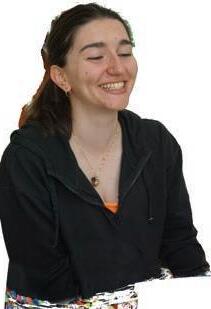








Their transition from IC to EV was made after a series of engine failures and other setbacks during COVID-19, Aerodynamics Lead and McCormick fourth-year Marina Hutzler says.
“At that point, some of the knowledge of the internal combustion car was leaving with the people who are graduating,” Hutzler says. “That’s when we decided: If that knowledge is already leaving and we’ve had all these issues in the past, let’s switch to EV. Let’s follow the trend of the industry as a whole.”
Team members spend many late nights worrying over faulty engines, unresponsive sponsors and cramming to pull everything together for a test drive in the first week of May, which Menendez says creates community. According to Project Manager and Medill third-year Skye Garcia, the relationships forged from these difficult times hold the club accountable and push for greater progress.
“We all have the same common goal that links us together, which is moving the car, having people drive the car at the end of the year [and] building something that we’re proud of,” Garcia says.
Success in their competitions is just one concern. The other challenge for the club members is balancing the organization and their academics.
Northwestern Formula Racing can be a massive time commitment for some, but others use it as a learning opportunity. McCormick second-year Danish Galebotswe says his experiences in the club have greatly assisted his understanding of concepts taught in class. Upperclassmen from Formula have also made themselves available to help underclassmen like Galebotswe with their introductory engineering and math courses.
Northwestern Formula Racing’s impact also extends beyond workshops and classrooms. The club has been crucial in the job search, especially for Hutzler,


an avid fan of Formula 1. With the help of her Northwestern Formula Racing credentials, she received the opportunity to work with the Alpine Formula 1 Team during her gap year, where she got hands-on experience learning with professional formula cars, analyzing their aerodynamics and company operations.
One major transition the team has made in recent years is a push for inclusive leadership. In its 18 years of existence, Northwestern Formula Racing’s 2024 executive board is the first to see a female-identifying chief engineer. For Menendez, this accomplishment, though slightly overdue, has been deeply fulfilling and insightful.
Menendez remarks that being a woman in a historically male-dominated space has taught her to “be loud and clear” in advocating for herself — a skill she also hopes to pass down to future female leaders of the club.
In addition to Menendez’s efforts as an executive board leader, many general members have made their own efforts to promote gender diversity within Northwestern Formula Racing while pushing for change in the broader field.
As program director of Northwestern’s Society of Women Engineers (SWE), McCormick second-year Liza Kalika facilitated a cross-club collaboration, giving around 10 women the opportunity to get hands-on experience with important machinery in the Ford Motor Company Engineering Design Center’s workshop.
“The Formula girls taught the SWE members how to use the mill and the laser cutter. We made these wooden coasters, and we laser cut ‘gaslight, gatekeep, girlboss’ on them with little flowers. It was super cute,” Kalika says.
Despite the change, Northwestern Formula Racing remains the same club at its core. In particular, there is a shared passion that keeps members glued together, which Garcia sees as a result of experiencing the final product. The feeling of turning the engine on and seeing the success of her creation fall into place in front of her eyes was the most memorable experience for Garcia in her freshman days.
“The whole year, the engine is silent. You don’t hear anything. But they turn it on, and there’s this roar in the autobay. It was huge, it was loud, it was crazy — and I had worked on that,” Garcia says of the IC car. “It came alive … [and] everything that I had done that year came into fruition. It didn’t matter if the car drove or not. I could hear that thing moving.”





























Your backstage pass to UNITY’s annual fashion show. WRITTEN, DESIGNED AND PHOTOGRAPHED BY LEILA DHAWAN
spotlight hits the empty runway, illuminating the dark room. Friends, professors and designers go silent as they turn their heads in unison, awaiting the first model.
Communication fourthyear Allison Brook struts into the light with perfect posture and strikes a pose. Every eye in the room is glued to Brook and her outfit: a hot pink two-piece set constructed entirely out of bow ties. Applause and gasps echo through the space. Cameras flash. Designer Aria Carter sits in the front row, beaming as her design comes to life on the runway.
Carter is a client of Arts of Life, an organization that provides a creative outlet for individuals with intellectual and physical disabilities in the Chicago area. Last year, she watched her dreams become a reality through Northwestern University’s premier charity fashion organization, UNITY. All proceeds of the show support Arts of Life, UNITY's charity partner. UNITY puts creativity and inclusivity at center stage in various workshops and speaker events. Most notably, it holds an annual, student-run charity fashion show featuring Chicago designers. Designers and models in the club collaborate to bring unique pieces to life, working from mood boards and sketches to the final garments.
“What UNITY does is very special because it creates a fashion-specific space where students can learn about fashion, about fashion careers and how to take something from a side hobby to something they do seriously,” Creative Director and Weinberg fourth-year Yolanda Chen says.
Chen and other members host sewing, design and modeling workshops to teach incoming members how to make clothes and show them off. Chen says sharing her love for fashion design is her favorite part of UNITY.
“It really makes everything I do for UNITY worth it when I see that they managed to go from a student at a school with no fashion program to full-fledged designers,” she says.
After learning the basics of garment
“It really makes everything I do for UNITY worth it when I see that they managed to go from a student at a school with no fashion program to full-fledged designers.”
Yolanda Chen Weinberg fourth-year
making, designers coordinate with the models to generate ideas and patterns for the show. The models submit mood boards of what they like to wear to guarantee they feel comfortable on the runway. Based on those boards, the designers create a series of outfit sketches, which they later discuss with the models.
Active communication, organization and empathy are key aspects of UNITY’s design process, Chen says. These elements ensure the clothing team stays motivated throughout production and creates designs in a timely and efficient manner. UNITY has grown significantly in recent years. Executive Director and SESP fourth-year Anthony Engle has watched the club return to life after the 2020 show, hosted on Zoom. Since the pandemic, UNITY has grown from a team of 10 to 50.
“UNITY is special as it serves as an informal fashion department for a school that lacks one,” Engle says. “If you want to learn anything about fashion, you’re


not doing it at a Northwestern class, you’re doing it in UNITY or STITCH.”
UNITY provides the opportunity for students to try something new as well as resources for less-established designers to showcase their visions on a professional runway. This year, the club is introducing a line of clothing designed entirely by UNITY members. Chen says the UNITY line prioritizes inclusivity through the collaboration of both models and designers.
“By creating a UNITY line where every single model gets a custom piece designed for them, we are ensuring size diversity,” Chen says. “We are ensuring that models get a say in the creative process and they are wearing something that represents them rather than being a glorified hanger.”
The money raised through charity events and the annual fashion show allows Arts of Life to provide materials and a space for those in institutionalized care homes to express themselves through art. Over 40% of Arts of Life’s funding comes from fundraising sources, such as the UNITY Fashion Show.
Also, it’s often expensive to enter a fashion show as a designer. The registration fee for Chicago FashionBar Week, an annual fashion event in Chicago, is $300 — not including the cost of materials, models
and time. UNITY provides a unique opportunity for aspiring Northwestern and Chicago-area designers to showcase their work professionally for free.
“Having the opportunity to be in a UNITY show means having the opportunity to have professional photography,” Chen says. “You don’t have to hire models, you get to see your clothes on a runway setting as opposed to just on a mannequin, so I think it’s a great deal.”
Engle and Chen hope UNITY will continue growing and empowering creative minds at Northwestern and around Chicago as they prepare to graduate.
“These students inspire me so much,” Chen says. “They are all so busy, but they still take the time out of their day to do something creative that they are passionate about. Just watching them go from not knowing how to turn on a sewing machine to creating these beautiful and intricate final designs has been so inspiring.”
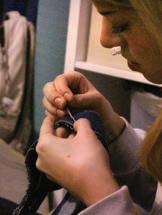
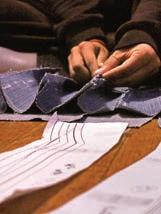
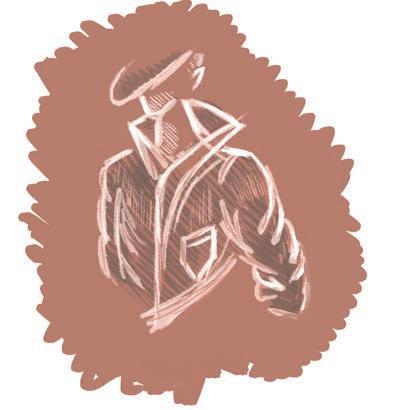

fternoon sun slants into The WasteShed Evanston, basking an ornate vanity mirror in gold light. The glass reflects the jewelry displayed in front of it –– neatly arranged rows of bracelets, rings and other trinkets. People mill about, rifling through bins of notebooks and soft-cornered postcards. A child picks up an old board game box, shaking it to hear the pieces rattle inside.
From a USSR-made microscope to Japanese ink prints, The WasteShed offers a trove of unexpected inspiration for the Evanston art community. Located at 1245 Hartrey Ave., with a second store in northwest Chicago, the nonprofit focuses on creatively reusing materials.
Emily Prescott, general manager of the Evanston location, first heard of the store when she was a graduate student at The School of the Art Institute of Chicago and joined the organization this year. The full-time team of sales associates — known as “Creative Reuse Specialists” — is relatively small, but there is a steady stream of volunteers, many from Evanston Township High School.

“I like to think that in addition to serving the purpose of getting the community

She describes The WasteShed as “a queer-led safe space” that people with different identities find welcoming. The store’s open concept allows customers to think outside the box. Its walls are decorated with everything from a vintage Madonna poster to framed stock photos from a diner.
“We’re trying to get people to think expansively about what art materials can be,” she says.
Materials from The WasteShed have found their way into the Northwestern arts scene. Communication fourth-year Maelea Tan first visited The WasteShed for a class called “Thrift Aesthetics: The Queer Art of Salvage” in their junior year. Tan, a theatre major, returned to find materials for masquerade masks based on the stages of grief for their senior honors thesis.
WRITTEN
BY
YONG-YU HUANG
DESIGNED BY SAMMI LI
PHOTOS BY ELISA HUANG



for personal creative projects. She often drops off old supplies at the nonprofit in the spirit of reuse.
The WasteShed also provides accessible school supplies for educators with a free section of donated items and a shopwide discount.
“I’ve sourced a bunch of different things: wooden boxes, mesh embroidery fabric, golden statues,” they say. “You name a section of The WasteShed, I’ve probably bought something from it.”
The variety of objects at affordable prices also inspired Evanston resident Wendi Kromash.

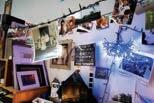
Chicago Public Schools teacher Donald Schiek says The WasteShed’s dedication to educators allows his students to access learning materials.
“Our school is a hub for many refugees and other newcomers to Chicago,” he says. “The WasteShed helps fill the backpacks many of our students receive on their first day of school here.”

The WasteShed’s creates value on both the community and the individual level. For Tan, the range of items — from glass stuffed animal eyes to old film photos — makes The WasteShed truly special.


“Each item they have tells a story, and I like that you can use those items in your own stories as well,” Tan says.



NUDM’s new moves
A restorative reimagination Funding the future

Play like a girl
Digging deeper
14 17 19 22 26 29
Donor deficit

Why Northwestern’s largest philanthropy event lost the spotlight — and
what comes next.
WRITTEN BY STEPHANIE MARKOWITZ // DESIGNED BY XIAOTIAN SHANGGUAN
Northwestern Dance Marathon (NUDM) has experienced an identity crisis over the past several years. In 2020, the iconic campus-wide event was canceled, and in 2021, it went virtual due to the COVID-19 pandemic. But instead of simply resuming business as usual, the new NUDM bears little resemblance to its pre-COVID iteration.
Before COVID-19, NUDM was a major part of campus culture, with about 1,650 undergraduates registered annually.
NUDM was also intrinsically tied to Greek Life, as the most zealous and successful teams were usually fraternity-sorority pairs.
“It felt very much about the competition, and less so about the charity,” says Eden Hirschfield (Medill ’22), an alumna sister of Kappa Alpha Theta.
“It was something that was sold to them as a means to bond their pledge class together,” says Max Friedman (Weinberg ’16), an alumnus brother of the Sigma Chi fraternity and former member of the NUDM corporate committee. “It was also promoted as an opportunity to grow the fraternity’s positive impact on the University.”
Sororities incentivized their members to register for NUDM to engage with fraternities, with some even giving housing points for involvement. For many members of Greek Life, participating in NUDM was standard practice. With 40% of freshmen joining Greek Life organizations during the 201920 academic year, NUDM’s overlap with
the Greek Life community ensured that a huge crowd of dancers would be in the tent every year.
The competition between fraternities and sororities, coupled with the $400 fundraising minimum all dancers had to meet to participate, drove up fundraising totals alongside attendance rates. For many participants, this funding came from friends and family.
“I knew people who got their parents to just donate the full $400 upfront to get it out of the way,” Hirschfield says.
To minimize entry barriers, NUDM established collaborations with various organizations that allowed dancers to get donations toward their fundraising goal or points for their teams by attending athletic games and other events.
Furthermore, pre-COVID NUDM was a very intense environment, Max Friedman says.
Once a participant left the tent during the 30 hours, they were not allowed to come back. To register meant committing to staying and participating all the way through. An anonymous ’22 alumnus says they witnessed students being berated by NUDM members or event organizers for taking breaks or asking to leave early.
Hirschfield says she considered backing out of the event when she realized she was going to actually be locked in the tent for 30 hours, but her sorority told her she had to take part. While Max Friedman explains this as a liability issue, Hirschfield says it was an “intrinsic” part of the experience.
“It was a source of pride that it was so strict,” she says. “The attitude was like, if you don’t want to do that, then don’t sign up.”
After years of establishing NUDM’s status as a mainstay of Northwestern culture, the need for major changes caught up with the NUDM team.
This transition was not made any easier by the COVID-19 pandemic, as Northwestern instituted virtual learning just days before NUDM 2020.
“That’s a whole class of students who were about to do [NU]DM but didn’t. Now those students don’t have stories to recount to underclassmen,” Max Friedman says.
His observation denotes a subtler consequence of COVID-19: The virtual years interrupted the organic word-ofmouth from older to younger students.
“If you don’t find out that NUDM is fun until your senior year, it doesn’t matter, because you can’t carry that forward,” Max Friedman says. “You can’t tell stupid stories to the people that haven’t done it yet.”
In 2021, for the first time, Greek Life teams were asked to register under a different name, partially due to pressure from the Abolish NU Greek Life movement. Unaffiliated students were automatically assigned to a general “Northwestern University Team.” For the 2022 edition of NUDM, students were randomly assigned to one of four color teams. In 2023, NUDM’s Dancer Relations team sorted self-selected teams again into one of four color teams to ensure equal sizing while allowing students to register with friends.


When the University re-launched in-person classes after COVID-19, there were only two grades on campus that had ever been to an in-person NUDM. With fewer upperclassmen remaining in Greek Life, younger students were less able to learn about older students’ experiences.
During this period, tensions within NUDM between exec members over Greek Life involvement were relatively low.
“There were no awkward conversations. We all wanted to make [NU]DM a more inclusive and accessible space,” says Medill fourth-year and former Communications Director of NUDM Jenna Friedman.
NUDM did away with the $400 minimum rule in favor of a flexible fundraising system in 2021, even knowing that they would raise less money, Jenna Friedman says. Under this new structure, any student could participate in the event regardless of how much they raised.
“It took COVID to make us rethink how we do things. We wanted to be truly inclusive and campus-wide,” says Weinberg fourth-
year and former Dancer Relations Chair Reese RosenthalSaporito. “There were a lot of misconceptions about what [NU]DM is. It was hard to change the narrative of how people viewed it.”
In addition to the earlier fundraising minimum abolishment, NUDM 2024 transitioned from a 30-hour event to just 15 hours, shifted its venue from the iconic Lakefill tent to Welsh-Ryan Arena and changed its timing from the weekend before Week 10 of Winter Quarter to the first weekend of Spring Quarter in response to a survey they conducted.
“I think the move to Welsh-Ryan was a good choice for the time being,” Medill firstyear and Student Committee member Toby Goldfarb says. “The tent would get sweaty and smelly, it’s easier to take a break, it’s more accessible for those with accommodations and it fits more people.”
The downside of this, Goldfarb says, is that the arena felt empty at times. In addition, being surrounded by empty stadium seats made it hard to motivate people to keep dancing instead of sitting down.
Goldfarb says many first-years were confused about the structure of the event, and Weinberg first-year Kyla Brown noticed the same patterns.


“A lot of my friends were like, ‘I don’t want to be locked in Welsh Ryan all night,’” Brown says. “It helps to know you can leave and come back.” 0 300,000 600,000 900,000 1,200,000 1,500,000 Lorem ipsum Fundraising Total (in dollars)
“It took COVID to make us rethink how we do things. We wanted to be truly inclusive and campus-wide.”
While it may be one thing to set lofty goals of reform and inclusion, it’s another to make them happen and engage students with an unfamiliar event.
“It’s hard to get people on board when things have always been done one way, but it was still important to us to make these changes,” Rosenthal-Saporito says.
In particular, the executive team placed more of an emphasis on student outreach for NUDM 2024.
“The whole exec board format was changed so that multiple positions were dedicated to campus engagement and student life,” says Medill fourth-year and

former Public Relations Chair Callie Morgan.
NUDM 2024 saw the most evolved version of the team structure. Student organizations could register their members as a team, or students could choose to register independently with their undergraduate school.
However, NUDM no longer sees the successful participation and fundraising numbers it had for so many years. To the outside observer, it might seem like NUDM is in decline.
“Past years were discouraging in terms of numbers,” Jenna Friedman says. “It was hard caring so much about something and not really knowing if other people cared.”
While it might not be reflected in the numbers, NUDM has been succeeding in at least one crucial way.
“There were an overwhelming number of freshmen this year,” Jenna Friedman says. “They’re the future of Dance Marathon.”
Because of the increasing popularity among underclassmen, the natural diffusion of NUDM stories previously interrupted by COVID is starting to reanimate.
“It’s all about word of mouth,” Brown says. “Now I’m going to promote it to all my friends next year, because I had a great time.”
In essence, the future of NUDM lies with those who won’t be graduating this June. Goldfarb, for example, will be one of several team members to join a new committee dedicated to reengaging Greek Life.
Yet those preparing to leave Northwestern can still look back at the impact they had on keeping NUDM alive. With one year of a relaunched NUDM already under the belt, the steps are in place to ensure future NUDM successes.
“This year was more than I could have hoped for, in terms of registration and turnout,” Rosenthal-Saporito says. “I’m seeing the shifting momentum, the impact of the changes we’ve made, and I’m really hopeful about future years.”


WRITTEN BY SARAH SEROTA // DESIGNED BY HEIDI SCHMID // PHOTOS BY SARAH SEROTA

Athe American Indian, detailed works of Indigenous art and culture fill the regional exhibits, from pottery used in daily life to pieces of turquoise jewelry.
Located about 3 miles west of Northwestern’s campus, the museum has showcased Indigenous history, art and culture to the Evanston community since its founding in 1977 by John and Betty Seabury Mitchell. Yet it was missing a crucial piece: Native American voices. While the museum employed several Indigenous staff, Native American board members were few and far between.
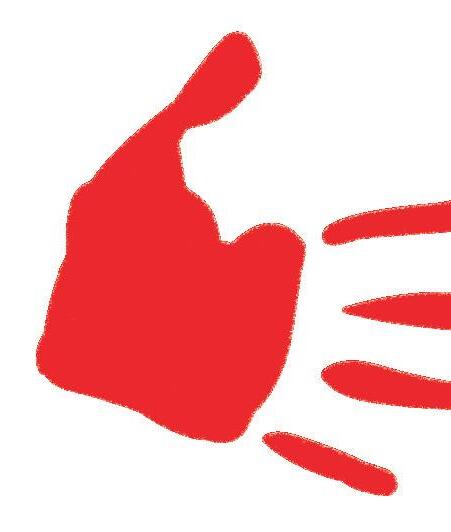
leadership found that some artifacts in its possession were looted from burial sites. Now, the museum is working to return items to Native communities.
“We passed on an eagle staff that we
The structure of the Mitchell Museum underwent a pivotal shift when Kim Vigue, a member of the Oneida Nation of Wisconsin and a descendant of the Menominee Indian Tribe of Wisconsin, joined as executive director in 2021. The composition of the staff and board gradually changed as well, reshaping the organization into a majority-Indigenousrun museum. This marked the start of a broader rebranding process, which officially began two years later.
“It’s like we’re reinventing the museum,” says George Stevenson, vice president of the museum’s board and a member of the Cherokee Nation. “I see this as much more of a change of focus and emphasis in what
museum’s upcoming projects is building an Indigenous medicine garden in partnership with the Chicago Botanic Gardens to make key species of plants accessible for sharing among local Native communities.

“It has to come from the Native perspective,” Vigue says. “If it’s something we purchase or that we sell or any sort of programming, anything that we put out … it has to come from the Native people.”
To gather feedback, the museum sent out surveys and held focus groups for the public to voice their ideas, concerns and thoughts. The responses have “exceeded” the museum’s expectations, Vigue adds, helping determine where and how the museum can grow.
Following abundant community responses, a key tenet of the rebrand is changing the focus of exhibits. Vigue says one of the museum’s goals is to shift the spotlight onto contemporary Native issues, such as missing and murdered Indigenous women. The museum now features a traveling exhibit, No Rest: The Epidemic of Stolen Indigenous Women, Girls, and 2Spirits. Featuring 12 Indigenous artists, the exhibit showcases 35 original works that raise
awareness of “the lack of response when a Native woman, girl or two-spirit individual goes missing or is murdered,” according to the exhibit’s pamphlet.
By highlighting contemporary issues, Vigue hopes to counter a misconception she commonly hears: Native people no longer exist. Vigue says the average person knows little about the tribes indigenous to the Great Lakes areas. To address this, the museum plans to add a Great Lakes contemporary art exhibit focused on topics such as cultural preservation, environmental issues and colonization.
The Mitchell Museum name will also change. Like the rest of the rebrand, the museum’s team is gathering input to determine what this future name will be.
“It circles back to the same issue, and it’s more than Native representation,” Stevenson says. “It’s not just a white man’s museum telling the white man’s story of the Indians, but it’s an Indian-oriented museum telling the Indian story.”

No Rest: The Epidemic of Stolen Indigenous Women, Girls, and 2Spirits.

The museum’s scope is not limited to Indigenous people. The Mitchell Museum also seeks to make Native history increasingly accessible to the wider Evanston and Chicago community.

“It’s an Indian-oriented museum telling the Indian story.”
George Stevenson Vice President of the Mitchell Museum’s board
A new law in Illinois requires public schools to teach students about Native American history starting in the 202425 school year. According to Vigue, the museum hopes to serve as an educational center for the general public and educators where they can ask questions and learn more about Indigenous peoples’ history.
The Associate Director of the Center for Native American and Indigenous Research Pamela Silas, who is of the Menominee Indian Tribe of Wisconsin and a descendant of the Oneida people, shares the hope that the museum will be able to fill an educational gap in the community.
“This is a time to take a look at what [the Mitchell Museum] is capable of,” Silas says.
Silas adds that this growth is neither unnatural nor abrasive. She says the museum is taking its time to sustainably evolve to modern needs and challenges.
“It is a beautiful thing to see this organization responding and adapting to a changing environment,” Silas says. “That’s sustainability.”

The Emerging Scholars Program grants student researchers money and mentorship.
WRITTEN BY MITRA NOURBAKHSH // DESIGNED BY JESSICA CHEN
Weinberg third-year Maddie Kerr was about to do something that would have been unthinkable for them three years ago: present their original research in front of an audience of professionals. They had just flown to Philadelphia for the American Educational Research Association’s annual conference.
Kerr’s journey to Philadelphia was made possible by the Emerging Scholars Program, a funding program from the Office of Undergraduate Research (OUR) meant to make research more accessible to firstgeneration, low-income (FGLI) students or students of color wanting to pursue nonlab-based research projects in fields like journalism, art and social sciences.
Created in 2021, the program provides eight first-year students with 15 months’ worth of research funding: $750 per quarter during the academic year and $4,000 each summer for two summers. It matches students with a faculty mentor and leads them through professional development workshops, building toward an independent research project.
The program’s system of walking participants through the stages from research assistant to independent researcher is a unique model of mentorship that professors and students alike say is undervalued. For Kerr, that process was invaluable.
“I am a very anxious person,” Kerr says. “I don’t think I would have had
without taking over. After some time, Kerr moved on to conducting independent interviews for the project.
Building those skills prepared Kerr to tackle the independent research project they pursued the next summer.
“By the time I was designing my own project and submitting to the [Institutional Review Board] and talking to these people in more of a high-stakes scenario, I felt like I had the experience to not mess up and do damage,” Kerr says.
Shirin Vossoughi, learning sciences professor and an Emerging Scholars Program faculty mentor, says she likes that the program encourages students to form a sustained relationship with a professor who can model best practices for research and engage in “mutual learning and teaching.”
“Sometimes there’s a heavy emphasis on independent research as the only kind of valuable research,” she says. “And there’s some wisdom to that. But I also think there’s value in undergraduate students becoming a part of projects and staying connected with those projects over longer periods of time.”
Vossoughi says she thinks students learning from faculty members before they pursue independent research should be the norm, as it helps them develop a sensibility about what it means to be a thoughtful and ethical researcher.
That model, however, is not generally emphasized. Most students looking to engage in research through OUR apply for a SURG, which allows them to pursue any project of their choice with a faculty sponsor but lacks the prolonged mentorship and research assistantship that Emerging Scholars say they benefit from.
In the 2022-23 school year, 304 students were awarded a SURG while 72 were awarded a research assistantship through the academic year version of the Undergraduate Research Assistant Program (URAP).
The summer version of URAP was canceled last year, as OUR chose to prioritize funding independent research through SURG. Director of the Office of Undergraduate Research Peter Civetta says the decision was made based on a student
focus group in which 62% of the students preferred URGs, 14% preferred URAP and 24% felt they were equal.
Moreover, he says some students might already have the skills to do independent research and therefore wouldn’t benefit from a research assistantship, so OUR would rather fund independent research that surely benefits everyone.
While Kerr had a wonderful experience with their mentor, they may represent a best-case scenario. Bienen fourth-year and Emerging Scholar Olivia Pierce points out that not all faculty have the time to focus on undergraduates.
“You don’t always have someone who can pour into you as a mentor, even if you’re a research assistant,” she says. “There are other ways to get that mentorship.”
After one summer serving as research assistants, it’s time for Emerging Scholars to
work with their mentor and OUR advisors to create a proposal for independent research. The summer after their sophomore year, they begin that research.
Kerr, inspired in part by Bartolome’s work studying music education for children with disabilities, decided to study the experiences of Ph.D. students with chronic illnesses or health conditions.
They conducted hour-long interviews with 16 Ph.D. students and found that these students described feeling a “simultaneous sense of invisibility and hyper-visibility.” With their data, Kerr put together recommendations for how administrators, faculty and institutional leaders could create more inclusive and accessible Ph.D. environments.
This kind of interview- or project-based research is precisely what the Emerging Scholars Program hopes to encourage,


“You’re all there already, and then you just get to learn from each other.”
Civetta says, especially for students who may not know how university research works. Making a documentary, for example, could even be considered research.
An added barrier, he says, is that nonlab research lacks the incentive and infrastructure for faculty members to collaborate with students.
“When I was in graduate school and I was working on my dissertation, it occurred to me exactly zero times to get an undergrad involved in what I did,” says Civetta, who is a theatre professor. “The fact was, it never occurred to me because it’s just not how it works in my field.”
The environment in some non-STEM, non-lab fields can be much more, “I do my work, you do your work,” he says.
The Emerging Scholars Program creates both the infrastructure and the incentive. For Kerr, it also created a community.
“One thing that was really cool about it being directed towards FGLI and underrepresented students is it wasn’t so stigmatized to talk about things like
money and affording apartments and summer housing,” Kerr says. “We could talk to each other about that and it wasn’t weird.”
Kerr has fond memories of going to the Adler Planetarium with other Emerging Scholars that first summer and says it was nice to feel a noncompetitive camaraderie with other students in the program.
“It’s not like you’re vying for one spot,” Kerr says. “You’re all there already, and then you just get to learn from each other.”
Civetta says OUR is not currently looking to expand the Emerging Scholars Program, as one of its assets is the community built through its small cohort of students.
The program was originally funded by a $300,000 grant from the Arthur Davis Vining Foundation, but since then, Northwestern has added it to its undergraduate research grant repertoire and is fully funding the program itself.
For its small size, the Emerging Scholars Program has seen disproportionately large success. SESP third-year and Emerging Scholar Kaylyn Ahn won the top overall poster presentation at the 2023 Undergraduate Research and Arts Exposition, where three of the other seven top poster awards were also given to Emerging Scholars.
As Kerr was on the plane to Philadelphia, Bartolome expressed how proud she was of them.
“They’re going to present their project at the American Educational Research Association Conference,” Bartolome says. “A full-on presentation at a conference, as a junior in college.”
In the last three years, Kerr has gone from someone who didn’t really know what research was to wanting to pursue a Ph.D. in sociology — thanks, they say, to the program.
“If the Emerging Scholars Program didn’t exist,” Kerr says, “I don’t think I would have been able to do the things I’ve been able to do with my research.”


WRITTEN
DESIGNED
BY
BY
ELEANOR BERGSTEIN
ILIANA GARNER
PHOTOS FROM UNIVERSITY ARCHIVES
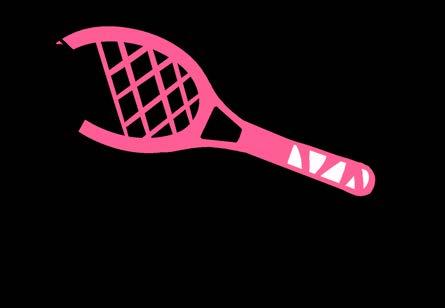
Northwestern’s first-ever basketball game was played by an allfemale team in front of an allfemale crowd.
The year was 1898, and the women who introduced the sport to the University were attempting to make up for their lack of physical education.

In their inaugural season, the group organized several games against local schools and tried to convince more women to join their initiative.
“Everyone who saw the game was delighted beyond measure, and made a resolution to attend every game of basket-ball which is scheduled,” reported an article in The Northwestern after a victory that year.


Over a century later, Northwestern is home to some of the nation’s best women’s sports teams. In the past four years alone, female athletes have brought home two national championships (lacrosse and field hockey) and several Big Ten titles.
As another successful spring season draws to a close, North by Northwestern chronicles the history of women’s sports at Northwestern, highlighting how female athletes have played hard, faced criticism and fought for more than just athletic results.
When Northwestern first admitted female students in 1869, the University’s recommended physical activity for women was a daily 30-minute walk. Most Northwestern women in the mid19th century did not follow this advice, though some participated in recreational sports clubs.
At the turn of the century, Jennie W. Craven wrote in The Daily Northwestern that more people were becoming aware of the importance of women exercising. But she lamented Northwestern women’s lack of interest in physical activity, writing that “a great many are constitutionally lazy, and they are usually hopeless cases.”
While Craven accurately identified a deficit of female participation in physical education, this was not due to a lack of interest. Just two years later, a group of women started the University’s first basketball team.
A student with the initials B.C.S. explained in The Northwestern how the team was formed.
“There are three sides of life, the spiritual and moral, the mental, and the physical,” B.C.S. wrote in 1898. “We girls seemed to be getting a liberal education in the first two, while the third was entirely neglected.”
B.C.S and her friends asked the University for permission to use the gym,
will return every week to play again. The experience has been that any girl who has once been present and has played basket-ball
“
- The Northwestern, 1898
which school officials were “anxious to do so,” she wrote.
The newly formed team played their first game in April 1898 against Austin High School, which was considered the best high school in the nation, and lost 10-2.
When Alice Reiterman scored Northwestern’s only points in the second half, The Northwestern reported “the scene was much like that … when the football team scores.”
Because the team had to keep crowd sizes small due to lack of space,
female crowds. The hope was that female spectators would be inspired to join the sport or invest more in their physical education. B.C.S. thought the plan was working.
“The experience has been that any girl who has once been present and has played basket-ball will return every week to play again,” she wrote.
One female student, Jennie B. Sturgeon, pointed out that the team was “continually handicapped by the lack of the most ordinary facilities” to train and play in. She hoped for more investment from the University.

A 1907 advertisement for women’s athletics.
“Instead of allowing a basketball team to strive without encouragement,” Sturgeon continued, “they will tender it the same hearty support which they give to base-ball or foot-ball.”
On the same page of the newspaper, a concerned letter signed simply “M.” echoed Sturgeon’s desire to promote women’s athletics. In comparing Northwestern to other institutions, M. noted universities with compulsory “gymnasium work” tended to have more women interested in exercise. Northwestern, they wrote, wasn’t doing enough to help female students see the value of physical education.

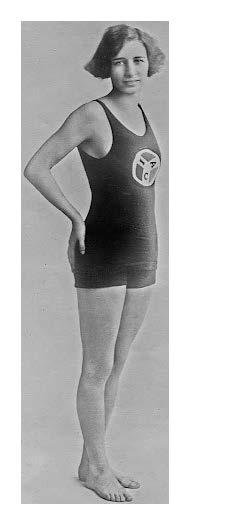
“A great deal is expected of [women] in the classroom, and in their ‘zeal’ for knowledge, they ‘plug’ away on something that gives them ‘credit’ and forget that one side of their nature is left entirely undeveloped,” M. wrote. “This evil … is best remedied from headquarters.”
Around the turn of the century, The Daily reported that more women were beginning to use Northwestern’s gym facilities. A March 1900 article described Warming up
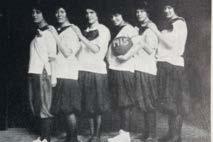

how a dumbbell class started for female students had generated so much interest that more weights had to be ordered.
The completion of Patten Gymnasium in 1910 created more opportunities for female physical activity. In the 1910-11 school year, Northwestern required physical education for female students for the first time. That year, over 300 women learned to swim.
Around the same time, students formed a Women’s Athletic Association (WAA). The association, which charged 50 cents for membership, created the University’s first women’s field hockey, fencing and indoor baseball teams. Membership included the right to play for any teams in the association, plus half off every football ticket. Every Wednesday was also “Sandwich Day,” when students made and sold sandwiches to raise money for the WAA treasury.
Despite the popularity of the WAA, these student-led organizations were prohibited from intercollegiate competitions. The official stance of organizations like the National Amateur Athletic Federation — and a widely held view at the time — was that women were unfit for athletic competition. The Olympics had only started allowing
women to compete a decade earlier, in 1900.
On the Olympic stage, Northwestern women were some of the early victors for Team USA.
Sybil Bauer was a Northwestern second-year in 1924 when she swam in the Paris Olympics. When she won the gold medal in the 100-meter backstroke, she became the first Wildcat to win an Olympic event. Back at school, Bauer also played field hockey and basketball. She was the first woman inducted into Northwestern’s Athletic Hall of Fame.
At the time, she held every backstroke world record, from 50 yards to 440 yards, beating the men’s record in the latter. Bauer passed away from cancer before her graduation in 1927.
In 1928, Betty Robinson became the first female winner of the Olympic 100-meter dash at just 16 years old. She went on to attend Northwestern and, while there, suffered injuries in a 1931 plane crash that almost prevented her from walking again. Five years later, she returned to the Olympic stage and won gold again.
Meanwhile, on campus, intramural competition between sororities was taking over the female sports scene. By the 1950s, sorority sisters faced off in field hockey, golf, badminton, bowling, archery, riflery and more, according to Walter Paulison’s 1951 book The Tale of the Wildcats. Yet these teams were still unable to compete against other colleges.

sports included field hockey, tennis, track, volleyball and softball, but did not receive significant media coverage or funding. These teams operated under the Physical Education Department, rather than the Athletic Department that coordinated the men’s teams.
An article in The Daily titled “NU women’s sports deserve aid” highlighted post-Title IX conversations at the University about incorporating women’s sports into the Athletic Department. Some thought legitimizing women’s sports would generate positive publicity. Others pointed out women may be better off not doing things the man’s way.
“The women can do without the illegal recruiting, the tampering with grades, the money handed out under the table,” the article said.
Other arguments against the incorporation suggested women’s sports would not generate
Many successful female athletes, including gold medalists, had attended Northwestern for years. By the 1970s, the school was starting to catch up by providing new opportunities for their female athletes to compete at high levels.
These changes were solidified in 1972 when then-President Richard Nixon signed Title IX into law, requiring educational institutions to provide equal treatment based on sex. In collegiate athletics, this meant equal opportunity to play, along with equal treatment and training conditions.
The passage of Title IX led to the creation of Northwestern’s first official varsity women’s teams. By 1974, women’s varsity
Boys
will be boys,
“ “ and girls will be girls...
- The Daily Northwestern, 1974
In the 1950s, the “bloomers” gave way to new outfits. Female intramural players could be seen in blue jeans and white or gray sweatshirts, or khaki shorts and button-ups, like in this photo of a 1950 tennis class.
enough attendance or that women lacked interest in athletic competition, echoing sentiments from almost a century prior.
At the time, Northwestern’s women’s basketball, volleyball and softball teams shared one set of 15 uniforms. The female athletic budget in 1974 was $17,000, more than double what it had been the year before, but still a fraction of the men’s budget. Some students were indifferent to this disparity.
“Boys will be boys, and girls will be girls, and women’s varsity sports will probably retain a distinct character,” a 1974 Daily article said.
Following rising pressure, the Athletic Department added women’s varsity teams later that year. Northwestern’s official women’s varsity basketball team kicked off its inaugural season in 1975, 77 years after the first basketball game was played at the University.
Six years later, the Big Ten officially adopted women’s sports. Northwestern saw early success, winning the first Big Ten softball title the next year.
Over the following years, Northwestern added golf, soccer and cross country to its
growing roster of women’s varsity teams. These teams often struggled for adequate practice spaces, equipment and funding.
Despite relative growth at the end of the 20th century, female athletes faced harsh criticism and disparities in coverage and professional opportunities.
In 1992, the Big Ten mandated that at least 40% of collegiate athletes must be women by 1997, per Title IX. Critics argued against the mandate, saying more men were interested in playing college sports than women.
But standout female athletes continued to defy expectations. Carri Leto became the first Northwestern female athlete to be drafted by a professional sports team in 2004 when she joined the New York/New Jersey Juggernaut in an early women’s professional softball league.
Leto’s experience was rare. Then-Director of Athletics and Recreation Mark Murphy told Northwestern magazine that “from the female athlete’s perspective, the carrot of becoming a professional isn’t there.”
“They tend to be more concerned about the quality of their education and are participating primarily for personal enhancement,” Murphy said.
Northwestern’s 11 varsity women’s teams have seen far more success in the past 20 years than their male counterparts.
Under the leadership of coach Kelly Amonte Hiller, the winningest coach in NCAA lacrosse history, Northwestern lacrosse has won eight national championships in under two decades, including the 202223 season, and has made the Final Four 14 times. When the team won its first national championship in 2005, it was Northwestern’s first NCAA title in any sport since 1941.
Softball won the Big Ten regular-season championship the past three seasons — 202122, 2022-23 and 2023-24 — their first three-peat since four consecutive titles from 1984-87. Field hockey won the NCAA national championship in 2021 and has been runner-up during
the last two seasons. Women’s tennis has won 15 Big Ten regular season titles and 16 Big Ten tournament championships.
Northwestern women have also taken advantage of growing professional opportunities post-graduation. Women’s soccer has sent several players to the National Women’s Soccer League, including Kayla Sharples (Comm ’19) and Marisa DiGrande (Comm ’19) who now play for Bay FC and Racing Louisville, respectively. More recently, Veronica Burton (Weinberg ’22) was drafted by the Dallas Wings as the seventh overall pick in the 2022 WNBA draft.
The list goes on, as Wildcat women continue to prove their dedication and talent. Female athletics have certainly come a long way since the 1800s, but they continue to face challenges to the legitimacy of their accomplishments.
The women of the 1898 basketball team lacked community investment, adequate facilities and equipment and were prohibited from intercollegiate competitions. Today, female collegiate athletes still face attendance disparities

appreciate our newfound rights, is that we have not been satisfied with gymnasium privileges for two days in a week,” she wrote, “but are already, like

WRITTEN BY DAVID SUN
DESIGNED BY LAURA HORNE
PHOTOS BY LAVANYA SUBRAMANIAN
Around the sterile room, dark mahogany cabinets open a gateway into the past, containing 15,000 artifacts from southwest Nigeria. Yet this is just a small sample — less than 2% — of the objects collected and excavated by professor Akin Ogundiran over his 34 years as an archeologist and African history expert. Relics litter the room’s center table, ranging from small seashells and broken shards of a tobacco pipe to rusted plates and fully preserved religious statues.
The room is part of the Material History Lab, a new space constructed in the basement of Harris Hall late last year as part of Ogundiran’s recruitment to Northwestern. Originally a seminar lounge, this room now allows Ogundiran to investigate material history: the study of objects and the stories imbued in them.
History professor and former department chair Deborah Cohen says the department was delighted to hire Ogundiran, one of the world’s foremost experts in early African history.
“This space was crucial for Ogundiran’s research, and many other faculty were interested in material history,” Cohen says. “It was the perfect opportunity.”
Even before the construction of the lab, Northwestern’s history department has long been distinguished in African history. Established in 1954, the Melville J. Herskovits Library of African Studies at Main Library is the largest separate Africana collection in the world. Now, Ogundiran continues this legacy through his study of material history.

The ultimate goal of history is to understand human experience in time and space. Through the subfield of material history, Ogundiran approaches this by studying how individuals and communities interact with one another through objects, which he says are “intrinsic to our humanity.”
“Material history gives you a new way of seeing the past. It’s a methodological
tool,” Cohen says. “Professor Ogundiran is working with some of the best-preserved evidence that helps answer questions about daily life in Africa.”
Material culture goes beyond studying physical objects. Materiality is also encountered through performance, dance, music, rituals and oral traditions, which all leave unique symbolic imprints.
One topic that Ogundiran has devoted his academic career to studying is the cultural intricacies of the Yoruba people, a West African ethnic group, in the early modern period. The main focus of his
scholarship is how modernity began in Africa.
“Very early on, I realized many parts of Africa did not leave written documents,” Ogundiran says. “Material culture offers an important way to study and understand African past.”
One of Ogundiran’s current focuses is researching the role of women in forming the Oyo Empire, an early modern empire in West Africa.
“I’m doing all this research to make a case on why global history must take Africa seriously,” Ogundiran says.

lab in Harris Hall. Items include an ivory finger ring (left), a bone bracelet (middle) and a wood bottle stopper (right). The artifacts in the lab served a variety of functions for African societies Ogundiran believes the bottle stopper may have been used for an animal skin bottle, for example.
every artifact in the collection. As he holds up broken shards of a pipe, he notes it once held Brazilian tobacco.
“Tobacco was truly the first global commodity,” Ogundiran says. “The entire globe participated in the consumption of this addictive product.”
Ogundiran gently picks up a cowry shell, about the size of his fingernail. He explains that such shells originated from the Maldives and were used as currency across West Africa. They were also exchanged for human cargo. Eventually, cowry shells defined a person’s value, shaping human aspirations regarding wealth and power.
“Studying these cowry shells alone opens doors to explore deep metaphysical, cultural and historical aspects of early African history,” Ogundiran says.
Ogundiran envisions this lab as not only a place where he can conduct his research but also as a space of interdisciplinary collaboration between faculty, researchers and students. One goal of the lab is to retrieve the chemical archives of various artifacts by working with researchers from the Chicago Field Museum. By determining the mineral and elemental compositions of his collection, Ogundiran can pinpoint the movement of people, ideas and objects to specific regions in Africa.
“Without understanding the chemical composition of this glass,” Ogundiran says, pointing to a set of glass beads on the table, “we would not have known that these glass objects were locally produced in West Africa and not imported from the Mediterranean.”
While walking through the lab’s collection, Ogundiran points to a statue of Esu he acquired from a temple in Nigeria. The greenish-gray object towers over the other artifacts, showing a humanoid figure with bulging eyes smoking from a long pipe. “This piece was composed to tell a story about how this local community interacted with the external world,” Ogundiran says.
Ogundiran can offer context on nearly

centuries, such as the fragment of a terracotta face (left), while others come from hundreds of years later, such as the lamp (left) and pot lid (top right) from the 17th and 18th centuries.
By the 11th century, the societies of West Africa were technologically advanced in glass-making, an important component of jewelry-making. In Ogundiran’s example, the higher levels of lime present in the glass result from snail shells containing calcium that were added during the manufacturing process to lower the material’s melting point.
This upcoming school year, Ogundiran is launching his first Leopold Fellowship, which recruits undergraduates to work with him in exploring this intersection between chemistry and history. In the Leopold Fellowship program, students are funded for up to a year to engage in historical research by working on current faculty projects.
“Objects evoke conversation. Students begin to pay attention because they’re touching and feeling history,” Ogundiran says.
Ogundiran’s Fall 2023 first-year seminar class, “Climate Change and Civilizations,” visited the Material History Lab multiple times throughout the quarter.
“We mainly went for fun, and he showed us some of the artifacts he was working with,” Weinberg first-year Maria

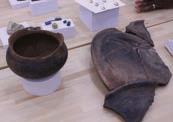
Horst says. “My favorite part was when he was showing us these bowls. Each bowl, on the bottom, had a unique potter’s mark.”
Ogundiran explained how historians could use these bowls to learn more about a person’s diet. Using lipid analysis, the pores of the bowl can indicate what people ate out of them.
“It was so impressive and incredibly cool to see the artifacts he brought,” Weinberg first-year Alexandra Haney says. “It was like we were seeing the behind-the-scenes of a museum right here in Harris Hall.”
Ogundiran is currently collaborating with the Office of Media Technology in Main Library to digitize the artifacts using photogrammetry, a technique that extracts 3D information from photographs. Ogundiran hopes these 3D replicas can allow K-12 students to interact with these priceless and fragile objects without damaging them.
“I’m working with Ogundiran to allow his lab to be a [3D] digital archive,” says Craig Stevens, the Northwestern Media and Technology Innovation (MTI) Department’s Innovator in Residence. “Using a traditional camera and taking
hundreds and thousands of photos and then putting them through a software allows for a 3D model to be created.”
Currently, Ogundiran is teaching a history course on drugs and alcohol in Africa, focusing on the transatlantic slave trade.
“West African societies had a surplus of human beings captured via war, and their willingness and motivation for the slave trade was fueled by their addiction to tobacco and alcohol,” Stevens says. “There’s a lot more empathy that can be [gained] by understanding these people.”
Stevens is a Ph.D. student in the anthropology department who works with 3D digitization and augmented and virtual reality visualization.
He and other members of the MTI department have digitized several tobacco pipes in the collection, making them accessible to use in the classroom. Unlike traditional photographs, these objects can be zoomed in on and rotated, and annotations can be added to specific parts of the artifact to streamline the learning process.
“It’s just extremely validating to see [Ogundiran] so established in this field ... and see that what I’m doing could be a contribution to his own goals. It’s the coolest experience as a student,” Stevens says.
For the last two years, MTI has been advocating for faculty to incorporate 3D models and digitization into their courses.

“ There is a lot more empathy that can be [gained]
Craig Stevens Media and Technology Innovation Department’s Innovator in Residence by understanding these people.”
“Our mission is to help Northwestern integrate emerging technologies more into the way that we teach and [conduct] research,” Stevens says. “This project is going to be a great example and motivation for more students, staff and faculty members to think about some of the technologies that we’re passionate about.”
Ogundiran hopes the Material History Lab will serve four dimensions — research, learning, collaboration and outreach — to further the interest and importance of African history.
“The study of African history cannot start with documentary sources,” Ogundiran says. “It must start with material culture.”




Through advocacy and drives, Northwestern’s University Blood Initiative chapter aims to combat the national blood shortage.
WRITTEN BY MILA BRANDSON // DESIGNED BY LEILA DHAWAN
Wblood didn’t go as planned. She finished her session with a bruised arm as volunteers hastily offered her water and snacks.
“I couldn’t go to cheer practice afterward because I was just so dizzy and out of it,” Ong says.
A high school sophomore at the time, Ong barely met the required minimum weight to donate, raising concerns among drive employees about her eligibility. But coming from a family of regular donors, she was eager to participate. She also carries O-negative blood, which people of all blood types can receive.
Although the technicians drawing her blood struggled to find a vein in Ong’s arm and she left feeling lightheaded, Ong returned to her high school’s drive the next year to donate again — and has encouraged others to do so ever since.
Now, Ong is the director of marketing for Northwestern’s University Blood Initiative chapter, where she promotes
encourage college students to donate so they can address the larger-scale challenges of a national blood shortage.
Blood donations are in high demand, as surgeries, cancer treatment, chronic illnesses and traumatic injuries can all require donated blood, according to the American Red Cross. However, the total number of people donating blood through the Red Cross has decreased by 40% over the last 20 years, hitting a record low in January 2024 that led the Red Cross to declare an emergency blood shortage.
The percentage of young adults and teens donating blood has also fallen steadily since 2013, according to the 2021 National Blood Collection and Utilization Survey. From 2019 to 2021, donors aged 16 to 18 decreased by 60.7% and donations from minority races and ethnicities declined by 35.4%.
To address the decrease in donations, outreach by organizations like Northwestern’s University Blood Initiative and private blood collection centers aim to re-energize younger populations. The groups emphasize the importance of diversity in donations to meet the needs of a wider range of patients
requiring transfusions. Greater ethnic diversity in blood collection typically results in a wider array of proteins and structures in the blood supply, and younger people help fill the gap left by older populations as they age out.
Since its founding in 2022, Northwestern’s University Blood Initiative chapter has organized 11 blood drives and collected around 300 units of blood. A single blood donation amounts to one to two units of blood, and one unit can save up to three lives. This means the club has collected enough to help 900 people.
“By having a student-run club that does this, we’re bringing in a new demographic and getting younger people to donate,” says Julien Rentsch, Weinberg fourth-year and founder of Northwestern’s University Blood Initiative chapter.
Rentsch started the chapter after participating in a remote summer internship with the national organization. He says targeting a younger demographic helps introduce individuals to blood donation, creating more lifelong participants.
In its most recent Winter Quarter drive, the student group partnered with Versiti, a private blood donation center. They collected a total of 26 units of blood, enough to assist 78 patients.
“It’s a very direct, health-focused way of contributing to the community,” says Sam Trammell, Weinberg secondyear and president of Northwestern’s University Blood Initiative chapter.
In addition to student groups, private blood collection centers like Vitalant and Versiti partner with community organizations, high schools and universities to run drives.
Phillip Sanfratello, Vitalant’s manager of donor recruitment, says the start of the COVID-19 pandemic in 2020 had a “deleterious” impact on donations.
“From March 13 on, our calendar went from having sometimes 10 blood drives a day to having maybe one a week,” Sanfratello says.
Vitalant, which supplies the NorthShore University Health System, John H. Stroger, Jr. Hospital and University of Illinois Hospital & Health Sciences System, aims to collect over 4,500 units of blood per day.
This goal became more difficult to achieve during the COVID-19 lockdowns, as the company was forced to stop collecting blood in high schools and universities.
“There’s just such a high need for blood and a comparatively little amount available for donation.”
Sanfratello says the shutdowns prevented students from seeing their peers donate blood, which often sparks interest among young people who may not have otherwise participated. Maintaining contact with donors as they enter college poses an additional challenge, as many Illinois students attend out-of-state universities.
High school and college students typically make up 20% of Vitalant’s total donations. However, people over the age of 55, primarily Baby Boomers, represent the largest population of loyal donors.
As Boomers become too frail to donate or start to require blood transfusions themselves, blood collected from their generation will likely decrease, creating a need for younger generations to step up.
Since the pandemic, Vitalant has upped its social media presence and educational outreach to recruit younger populations. Ads on Facebook and Instagram have helped promote upcoming collections.

Although the company is hosting inperson blood drives again, Sanfratello says donations are still nowhere near pre-pandemic levels. People can give blood every 56 days, or up to six times a year, but Sanfratello says the average donor in the Chicago market only donates about once a year.

It can be challenging to engage eligible donors at Northwestern and the surrounding Chicago area, Trammell says.
“There’s just such a high need for blood and a comparatively little amount available for donation,” Trammell says.
Many factors determine whether someone is eligible to give blood. Basic donation requirements state donors must be at least 16 years old and over 110 pounds, but travel history, medical records, medications, tattoos and skin piercings, among other factors, can render potential donors ineligible.

Other reasons, like fear of needles or blood, may explain why eligible people choose not to donate.
“Whenever I get blood drawn, I freak out,” Weinberg fourth-year Jack Shurtleff says. “It is always an enormous mental burden.”
Although new donors may be hesitant or nervous, Northwestern’s University Blood Initiative and blood collection centers aim to incentivize donations from



a diverse donor set, since the majority of first-time and regular donors are white, according to a 2021 study published in Blood Transfusion

“The more diversity we have in the blood supply, the better,” Sanfratello says. “Certain proteins in the blood are only found in certain races and ethnicities.”
These proteins and structures in blood can determine whether a person will be able to receive it. For example, Black Americans tend to have higher levels of sickle-cell disease, and patients who carry it need donations of blood similar
Sanfratello says Vitalant has increased outreach to Latine populations, as they often carry higher levels of O and O-negative blood. He adds that Asian American populations typically carry higher levels of B blood types.

Efforts to increase inclusion among blood donors have been somewhat successful. The FDA relaxed guidelines on blood donations in 2023, lifting limits on the LGBTQ+ community, particularly gay

The guidelines now rely on a set of screening questions that assess individual medical history and lifestyle to determine eligibility for blood donation. All donors are asked the same questions regardless of gender or sexual orientation, and blood donation is then permitted or not based on individual risk of HIV. This widens the population of eligible donors, but

awareness that it’s now easier to donate may still be low.
“The FDA has definitely made it easier and more inclusive for donors to donate,” Sanfratello says.
Northwestern’s University Blood Initiative is working to inform students of the new regulations. Last quarter, they hosted an educational event centered on LGBTQ+ inclusivity in donations.

The group aims to continue to grow its membership and engage students by bringing guest speakers to campus and organizing a blood drive this spring.

As Northwestern’s University Blood Initiative continues to host drives, Trammell highlights campus blood collection’s positive impact in the Evanston and Chicago area, as the blood recipients are often local hospitals and blood processing centers.
“Blood drives usually do benefit the local community first,” Trammell says.
This potential to help others is rewarding for many donors. McCormick fourth-year Kevin Considine, who has donated blood with Northwestern’s University Blood Initiative, says the short procedure is an easy way to assist others.
“It’s nice to know that something so insignificant to me could be so important to someone else,” Considine says.


“It’s nice to know that something so insignificant to me could be to someone else.”
Kevin Considine McCormick fourth-year
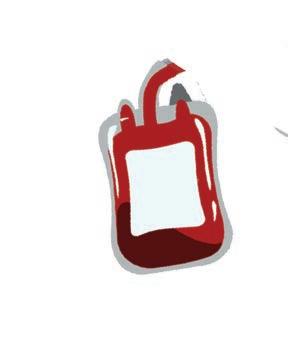





To combat performance anxiety, musicians turn to medication.
WRITTEN BY SARAH LIN
DESIGNED BY GRACE CHANG

In the days leading up to an audition, Bienen fourth-year Luisa Brown-Hernandez would do her best to prepare. She’d make any last annotations to her sheet music, put in extra practice hours and do deep breathing exercises, all to ensure her performance would be perfect.
But somehow, she would always choke.
As soon as the judges’ eyes centered on Brown-Hernandez, it was as if fire and ice hit the double bass performance major at once. Her cold, sweaty palms made the bow slick between her fingers, causing shivers and skitters across the strings. A hot burning sensation in her chest induced an uncomfortably rapid pulse and left her short of breath.
“Mentally, it can be really hard to focus because I’m so nervous,” she says.
Nothing could quell her nerves — until she tried drugs.
Brown-Hernandez is currently prescribed 10 milligrams of propranolol for her performance anxiety, a beta blocker commonly used to treat heart problems. Beta blockers regulate heart rate, treat tremors and alleviate chest pains, symptoms of both a short-term feeling of heightened anxiety and a long-term heart issue.
Due to beta blockers’ ability to subdue the physical manifestations of performance anxiety, combined with minimal side effects if taken in small doses, many professional musicians choose to rely on such a prescription. They’ve become a “nearly ubiquitous” secret within the classical music world, The New York Times writes.

“You will get caught in a professional audition for a quivering lip or the smallest little thing that could have been very easily prevented by this drug. There’s definitely no way to know what percentage of audition winners use them, but it seems to me like it’s most.”
Alec Mawrence Bienen ’20
“A lot of people don’t realize how some people feel when they perform. I don’t think they can understand what it feels like to have an actual panic attack when you’re trying to play,” Martin says.
But what was scarier for Martin than any potential negative peer feedback was fearing she would not perform to the standards she had set for herself. As her own worst critic, the pressure she placed on herself to “be perfect, every single time” was all-encompassing.
“There was a period of time where it was hard to even listen to myself play,” she says. “People would tell me it sounded good, but it just sounded so bad to me.”
Alec Mawrence (Bienen ’20) says he never took beta blockers while studying tuba at Northwestern because he never felt abnormally anxious performing for his peers. However, he says the “miracle drug” helped him quell the physical symptoms of a dry mouth and shakiness once he started auditioning professionally, two things he says “are not conducive to playing the tuba.”
The first time Mawrence used beta blockers for an audition was for his
Julian Stiles (Bienen ’23) also takes beta blockers to soothe audition nerves.
“Auditions are really brutal,” Stiles, a French horn player, says. “In the orchestra world, there’s usually hundreds of applicants, and there’s only one person getting the job at the end.”
Although Stiles began taking beta blockers as a student, his usage has recently increased, as he feels the need to take one every time he auditions.
“If I mess up in a school performance, I’ll probably feel a little sad and feel bad but everything will be okay,” he says. “When it’s your profession, you want to give it your all, and you don’t want anything to be in the way if you can avoid it.”
University of Illinois at Urbana Champaign second-year Indya Reed recently started taking beta blockers after blacking out on stage during her freshman solo showcase.
“There were a lot of things that went wrong for me because of my nerves,” she says. “There would be mistakes I never made before. … I would second guess myself and I couldn’t think straight.”
Reed, a cello major, says the experience

In fact, Reed, Brown-Hernandez, Martin, Mawrence and Stiles all have the same 10-milligram prescription of propranolol. They all obtained the prescription from a physician or a psychiatrist, albeit with slightly different tests. For instance, Martin’s blood pressure was tested to ensure it was not too low and
After learning about professional musicians’ usage of beta blockers on an online forum, Martin began taking them and has since recommended them to friends.
“Some people tell me, ‘I don’t shake when I get nervous, I don’t ever need that.’
encountered beta blockers in high school when watching a YouTube interview with Phil Myers, a New York Philharmonic horn player. In the video, Myers jokingly said students should take drugs if they’re struggling with performance.
However, Stiles only realized how widespread the drugs were when other

Although Shuman’s nerves take root hours before a performance, they don’t manifest during the actual show. Instead of stage fright, the theatre major has waiting anxiety, for which she takes an occasional propranolol, and generalized anxiety, for which she takes a daily Lexapro. These medications ground her in performance and in life.
Shuman says she grew up openly discussing mental health with her parents, who medicate for similar reasons as she does. She wishes others could
recognize the importance of mental healthcare for performers.
“The performing arts is something people are very passionate about, and therefore it can cause people to be very involved and very emotionally invested,” she says. “Those are things that can cause people to have a lot of anxiety around performances.”
Communication fourth-year Lilah Weisman says she frequently talks to her fellow theatre major friends about mental health and doesn’t believe there’s a stigma or a taboo within the Northwestern performing arts community around
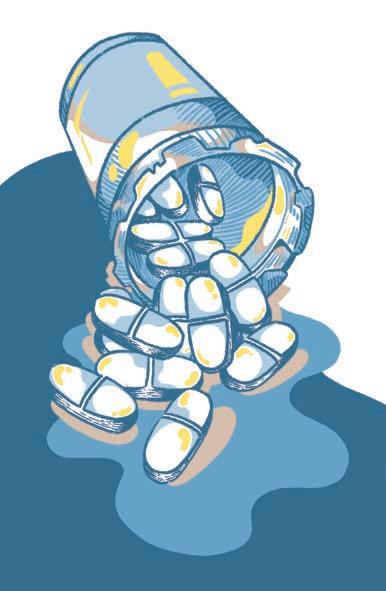
Beta blocker use is also common among athletes and medical professionals for activities that require precision, such as golf and surgery.
But in certain sports communities like archery and shooting, propranolol and other beta blockers are banned as a doping drug for the competitive advantage they provide athletes. Few music institutions have similar regulations for doping among their musicians.
In fact, Weisman believes most performers struggle with anxiety.
According to a 2016 study conducted by the Musicians UK charity, about 70% of musicians surveyed said they have suffered from anxiety or
“I think you’re in the minority if you don’t deal with [performance anxiety] as a performer,” she says.
“Basically all my friends are on some sort of medication, [including beta
Weiss says peer discussion around beta blockers is open and frequent within music communities. However, some musicians believe the drugs are performance-enhancing, which she disagrees with.
“It’s not a performance-enhancing drug you take to be miraculously above your peers,” she says. “The only way you’re going to be miraculously above your peers is practice.”
Within the music community, instrument players have different perceptions of how widespread beta blockers are. Perception may depend on an individual’s instrument of choice — Brown-Hernandez says beta blockers are more common for wind instruments than strings, for example.
Brown-Hernandez hopes any stigmas around beta blockers will subside.
“I think [beta blockers] shouldn’t be taboo,” she says. “You’re just trying to give yourself the best chance at performance that you can. If we’re all sharing that knowledge and that resource, then it’s more fair for everyone.”
Mawrence says he very rarely hears negative opinions about beta blockers in the professional music world, because “everyone I know uses them.” However, a recent Facebook post featuring Mark Gould caught his attention, where the former principal trumpet of the Met Opera criticized the Los Angeles Philharmonic orchestra by saying “many players [were] on beta blockers.”
Beta blockers’ harshest critics seem to be from older generations, Mawrence says.
“It’s almost a made-up controversy because you read all the comments and they’re almost all positive except for a couple of old geezers saying, ‘I never needed them in my day,’” Mawrence says.
Emphasis on “a couple,” Mawrence adds. At Northwestern, his tuba professor openly talked about taking beta blockers, despite being of the “old geezer” generation.
Weiss says she’s also able to discuss medicating with her professors.
“I told them ‘I feel like my performance anxiety is a really huge issue,’” she says. “They immediately were like, ‘Are you taking beta blockers?’”
Conversely, Brown-Hernandez hasn’t discussed her usage of beta blockers with her professor and is apprehensive about how he’d react.
“It’s almost a made up controversy because you read all the comments and they’re almost all positive ... ”
“I think he would be disappointed or push me toward other avenues,” she says. “Maybe he’d be upset that he wasn’t a part of that conversation and maybe he’d feel like I didn’t really try everything before the beta blockers.”
For music professors, there is also the worry they could lose their job over promoting beta blockers. A Rhodes College flute instructor was fired in 2003 for recommending the drug after university officials charged that she was distributing the medication to adult students herself, obtaining them from a third-party doctor.
Brown-Hernandez says her professor encourages her to try “natural” approaches to managing stress instead, such as meditation and breathing exercises.
Shuman says theatre professors similarly offer mindfulness exercises in classes, which helped her develop a preshow meditation and affirmation ritual.
Despite developing these “natural” habits to relieve anxiety, Shuman doesn’t see herself stopping her usage of beta blockers or Lexapro in the near future.
However, other musicians like Martin are optimistic they can train themselves to not need propranolol for performances.
Martin says he has been experiencing less and less performance anxiety and hopes to ween off the drug completely.
To train her nerves, Reed is giving herself performance exposure therapy, playing whenever she can.
“I avoid using [beta blockers] during classes where we play for our peers, like studio class or chamber studio,” she says. “That way I can practice controlling my emotions and my


As Chris Collins made his way onto the court for Northwestern’s firstever appearance in the NCAA tournament in March 2017, he was engulfed by a sea of purple cheering for him and the Wildcats.
“That was a walk I’ll never forget,” Collins says. “I almost started crying. … That day I realized how much it meant to so many people.”
Since becoming head coach of the Northwestern men’s basketball team in 2013, Collins has taken the team to new heights. Dubbed “The Pioneer” by college basketball insider Jon Rothstein, Collins led the Wildcats to the NCAA tournament and a schoolrecord 24 wins in his fourth season. Over the past two seasons, Northwestern has reached back-to-back NCAA tournaments, winning their opening game each year. North by Northwestern sat down with Collins to reflect on his coaching legacy and look ahead to his future with the Wildcats.
For Collins, basketball was a birthright. He grew up watching his father play on the Philadelphia 76ers from 1973 to 1981. Doug Collins, who was recently inducted into the Naismith Memorial Basketball Hall of Fame, was the first overall pick in the 1973 NBA draft and earned four NBA All-Star selections.
“Once I was old enough, I always had a ball in my hand,” Collins says. “Whether I was in my crib, playing Nerf, … shooting into a laundry basket — I was always drawn to it. I always loved it. I was always playing wherever I could and tagging along with my dad.”
When his father became head coach of the Chicago Bulls in 1986, a 12-year-old Collins joined the team as a ball boy. He was in the locker room before and after every game soaking up knowledge from his dad and a young Michael Jordan.
“When I moved to Chicago, it really sunk in not only how much I loved [basketball], but how hard you had to work if you wanted to be a good player,” Collins says.
As he got older and played high school basketball, he says there were certain expectations of him, but he always tried to use them as motivation.
“I was always so proud of who my dad was, but I was also really motivated to get my own name and create my own legacy in basketball,” Collins says. Collins attended Glenbrook North High School,
about 30 minutes away from Northwestern. He was named Mr. Basketball in the state of Illinois and a McDonald’s AllAmerican in 1992, two of the highest honors for high school basketball players.
He went on to play college basketball at Duke University with future Hall of Famers Grant Hill and Bobby Hurley. Collins scored over 1,000 points in college and started in the 1994 National Championship game. In his senior year, Collins was selected for the All-ACC team alongside future NBA players like Tim Duncan, Stephon Marbury and Antawn Jamison.
With such a successful college career, it seemed Collins was set to go to the NBA. However, in his senior night game at Duke, Collins broke his foot and missed a summer of pre-draft workouts while recovering. His chance to reach the NBA that year was crushed.
To prepare for another shot at the NBA, Collins played in Helsinki, Finland for nine months. The following summer, he went to training camp with the Minnesota Timberwolves. The day before the roster was finalized, Collins was cut, leaving him with an impossible choice. He says he considered going back to Finland but missed his family and decided to enter the next phase of his life.
Former Duke head coach Mike Krzyzewski says he never coached someone who played with more enthusiasm than Collins. He says he knew early on that Collins was a student of the game and a leader on the court.
“He had a chance to make it to the NBA, but you need continuous preparation and [his injury] really set him back,” Krzyzewski says. “However, it set him forward in the fact that it gave him an earlier entrance into coaching.”
Collins scoffs when asked if he grew up wanting to be a coach.
“Growing up, you want to play,” Collins says. “That was my goal. Be a great college player, be an NBA player. But once that dream was over, it was just the natural progression to say, ‘Let me now try to give back to the youth. Let me try to be a coach,’ because basketball was all I knew.”
His first coaching gig was as an assistant for the Detroit Shock in their inaugural season as a WNBA team in 1998, where he first learned how to do scouting reports, interact with players and develop fundamental coaching skills. After his time in Detroit, Collins spent two years as an assistant coach for the men’s team at Seton Hall University.
Collins was running a youth summer camp at Seton Hall in 2000 when someone came down to the court and told him he had a phone call from Krzyzewski.
“I had him earmarked right away as somebody that I would want to come back to Duke and be on my staff,” Krzyzewski says. “He was born to be a coach.”
“He's built a program that is respected by all.”
Bryant McIntosh Northwestern Men’s Basketball Assistant Coach
“He just said, ‘It’s time for you to come home. Come back and coach with me,’” Collins says. “That was an amazing feeling to have my coach, my mentor, want me to come back and help him continue to build the Duke program.”
For Collins, that call set off a 13-year journey as an assistant coach at Duke. He had a front-row seat to learn from one of the most successful coaches in all of basketball. The team won two national championships in that time, and Collins also had the opportunity to coach alongside Krzyzewski from 2006-2012 for the U.S. Olympic team featuring NBA stars such as LeBron James, Kobe Bryant and Dwayne Wade.
“I mean, what a dream come true for a young coach,” Collins says.
In 2013, Collins finally felt ready to take on the responsibilities of a head coach. When Northwestern offered him the head coaching position, he says he was scared but could not have been more excited. Having grown up in the area, Northwestern felt right, and something about the opportunity enticed him.
“There wasn’t a lot of tradition,” Collins says. “There wasn’t a lot of history.”
Collins embraced the challenge of building up a program at a school he says was considered the “laughingstock of the Big Ten.”
“I’ve always been motivated to … create my own legacy, and I felt this was an opportunity where I could go and make a real impact,” Collins says.
As Collins made his way onto the floor for his first Big Ten game as Northwestern’s head coach in January 2014, he looked up into the stands. Instead of the wave of purple he had expected,
Doug Collins plays for the 76ers. Chris Collins becomes ball boy for the Bulls.
Collins scores over 1,000 points as a player for Duke.
Wisconsin red filled Welsh-Ryan Arena. As Badger fans chanted the Wisconsin fight song, Collins distinctly remembers looking at the scoreboard and seeing Northwestern trailing 40-14.
At halftime, Collins found himself staring at the wall. For the first time, he thought to himself, “I don’t know what I’ve gotten myself into.” Wisconsin went on to win 76-49.
Yet a month later, the Wildcats went to Madison and took down the Badgers, a team that ended up going to the Final Four that season.
Collins describes this as one of his greatest memories, pointing behind him to a framed picture of his players huddled together from that game.
“This picture will always be in my office,” Collins says. “I love looking at it because it’s a reminder to me of where we started.”
The next few years were a slog for Collins and the Wildcats. Northwestern finished 14-19 in Collins’s first season and 15-17 the following year before improving to 20-12 in the 2015-16 season. Collins says he could see the signs of improvement and knew they were slowly “climbing the hill.”
The Wildcats finally mounted that hill during the 2016-17 season, led by Bryant McIntosh, Scottie Lindsey, Vic Law and Dererk Pardon. Northwestern earned an 8-seed in the NCAA tournament and defeated Vanderbilt 68-66 in the Round of 64.
“After we made the tournament, [Collins] called us into the locker room and said, ‘Guys, it’s special to get invited to the dance. But we don’t want to be there for just one song,” McIntosh says.
McIntosh, now an assistant coach at Northwestern, says Collins has a way of wrapping players into his vision for the program and getting them to buy in. He describes Collins as a father figure and says it is easy to put all of his energy and effort into Northwestern basketball working under a man he respects so much.
“I’m biased, but I think [Northwestern] should put his name on the floor just because of what he’s been able to do,” McIntosh says. “He’s built a program that is respected by all.”
After its win against Vanderbilt, Northwestern found itself down by 18 at the half against Gonzaga in the Round of 32. The Wildcats clawed back and nearly upset the eventual 2017 National Championship runner-up, but fell short — losing 79-73. While the result may not have been what the Wildcats
Collins assists USA Basketball Men‘s National Team with on-court duties and game preparation.
Collins joins Duke’s coaching staff; he stays until 2013.
Collins coaches his first Big Ten game.
Collins accepts an offer to become the Northwestern head coach.
hoped for, they had made school history and redefined Northwestern basketball.
“Their legacy will always live on because they were the first,” Collins says. “That core group of guys came here and believed in a vision. I sold them a vision of ‘Hey, come be a part of the first. We’re going to do something special.’”
Northwestern makes the NCAA tournament for the first time in program history.
The ’Cats return to the NCAA tournament; Collins receives Big Ten Coach of the Year. Northwestern earns its first back-to-back bid to March Madness.

The following season, Northwestern returned much of the core that had helped them reach the NCAA tournament but couldn’t reproduce the results. The team finished 15-17, and Collins says they lost a little bit of the edge that had gotten them over the hump.
Collins says his biggest self-criticism is how he coached the 2017-18 team. He believes they had the talent to go to back-to-back NCAA tournaments and blames himself for not fulfilling the team’s potential.
“I let my foot off the gas pedal a little bit, and then it carried over to the guys, and that’s all it took,” Collins says. “The house burned down and then we had to rebuild.”
The momentum Northwestern gradually built over Collins’s first four years as head coach had faded. During the 2019-20 season, Northwestern went 3-17 in the Big Ten and 8-23 overall. Over the next two seasons, Northwestern went a combined 24-31 and lost stars Miller Kopp, Pete Nance and Ryan Young to the transfer portal.
This steady decline sparked a lot of negativity entering the 2022 offseason, culminating with a meeting between Collins and Northwestern Athletic Director Derrick Gragg. With rumors swirling that Collins was in the hot seat, Gragg released a statement announcing Collins would be returning as the team’s head coach.
“A lot was made about the statement that was put out. … The way it was like, ‘Win or else.’ I never viewed it like that,” Collins says. “This is a big boy business. You’ve got to produce results, I get it.”
The rumors about Collins’s job security loomed large in his son’s life. Just as Collins had for the Bulls, Ryan Collins assisted the Northwestern team as a waterboy and rebounder when he was in middle school.
Now a Communication third-year, Ryan Collins officially became a team manager as a first-year. He says he understands the nature of the business, but he began taking losses a lot harder because he knew what each one meant.
“I would load up ESPN and see articles about coaches on the hot seat and see my pops on there, and it did kind of take a toll on me mentally,” Ryan Collins says.
As the pressure mounted, coach Collins says he knew he had to stay true to what he believed and could not get distracted by what was going on around him.
“The public perception was that the program was crumbling,” Collins says.
In June of that year, Collins and the Wildcats met in what he described as one of the best team meetings he had ever been a part of. He says they talked about “staying the course” and “not running from adversity.” He says that meeting is a moment he will never forget, because after that day, he knew the program was “going to be OK.”
“We had a real rallying cry of something to prove,” Collins says. “We knew we were a lot better than people thought.”
SESP fourth-year and guard Ty Berry says the meeting was emotional and a turning point for the team.
“That’s when everybody really, truly bought into what we were building, and that’s when it started to click for us,” Berry says.
Berry says Collins is a brilliant basketball mind and his coaching style lets his players do what they do best.
“He puts a lot of faith into his players and trusts us to make the right plays,” Berry says.
When Northwestern was picked to finish 13th in the 2022 Big Ten media poll, Berry says the team played with a chip on their shoulder. Collins’s passion and intensity became the identity of Northwestern basketball.
“I’ve always been a fighter,” Collins says. “I try to preach to our guys, ‘As long as you have another breath, you keep fighting, you live to see another day. You get back up and you fight.’ That has kind of become a mantra for us.”
So, Collins and the Wildcats kept fighting. Northwestern finished 22-12 in 2023 and set a program record with 12 Big Ten wins.
After a dramatic victory over No. 1-ranked Purdue, Collins and his son embraced in a postgame interview that encapsulated Northwestern’s return to relevancy.
“I was overcome with emotion just because of the adversity we’ve had through the past couple of years,” Ryan Collins says. “People ask me why I’m so emotional and invested in these games. It’s my dad’s job, and this team is everything to me.”
Collins was named Big Ten Coach of the Year and Northwestern earned a 7-seed in the NCAA tournament — its highest seed ever. The Wildcats defeated Boise State in the Round of 64 before falling to UCLA in the Round of 32.
Despite losing seniors Chase Audige and Robbie Beran, Northwestern kept its momentum during the 2023-24 season. They defeated Purdue at home for the second straight season, setting themselves on track to return to the NCAA tournament.
Collins’s fiery personality was on display during the second meeting with Purdue this season, when he was ejected for the first time ever after confronting a referee on the court in the final seconds of overtime.
“That was something I did on purpose because I felt like I needed to fight for our guys and I wanted to fight for our program,” Collins says. “We’ve gotten to a point in our program where we can compete with those teams, and I wanted everybody to see that we’re not the old Northwestern.”
While Collins likes to wear his passion on his sleeve, he knows that is not always what his team needs.
“What I’ve tried to learn through my years coaching is, ‘What does my team need in that moment?’” Collins says. “Does my team need my calm? Does my team need my poise? Does my team need my fire?”
He says he showed too much fire in his early years, which was detrimental to the team. Having found a better balance,
“Does my team need Does my team
my calm? Does my team need my poise? need my fire?”
Chris
Collins
Northwestern
Men’s Basketball Head Coach
Collins was on the brink of taking the Wildcats to back-to-back NCAA tournaments for the first time in school history. All was good in Evanston — until the bad news came pouring down.
First, it was Berry going down with a season-ending meniscus injury in early February. Northwestern was resilient, winning three straight games despite losing their sharpshooter. Then, in early March, Communication fourth-year and center Matthew Nicholson was sidelined with a foot injury that kept him off the court for the rest of the year.
“It was heartbreaking to not have Ty and Matt play in the tournament,” Collins says. “Not only because I knew what we were capable of as a team, but just for them, to see them in casts and braces and not be able to go out there and compete with their teammates.”
Losing two starters leaves a bad taste in Collins’ mouth when he thinks about what could have been Northwestern’s most successful season in school history. Still, he was proud of what they accomplished after Berry and Nicholson went down.
Despite losing three of their last four games, Northwestern made the NCAA tournament as a 9-seed. Facing Florida Atlantic University (FAU) in the Round of 64, the Wildcats found themselves tied at 58 at the end of regulation. Collins says their four overtime games during the season gave them the experience and confidence they needed heading into the extra period. Northwestern ran away with the game — outscoring FAU 19-7 in overtime — to win 77-65.
Northwestern lost to the eventual National Champion University of Connecticut in the Round of 32, but Collins says it did not dampen the year at all.
Collins knows it will be challenging to keep up the momentum Northwestern has built over the past two years, but it is a test he is ready to embrace.
“I know the narrative is going to be, ‘Now they can’t win without Boo [Buie],’” Collins says. “Can we move on from one of the all-time greats and still continue to win? That’s what is driving us as we move into the future.”
As Collins and the Wildcats look to the years ahead, fans can rest assured that Northwestern is in good hands.
“I loved every second I was with Chris. Every second,” Krzyzewski says. “He’s a special guy, and he’s made my life and my family’s life better on and off the court. And I know he’s done that for the young men who have played for him at Northwestern.”
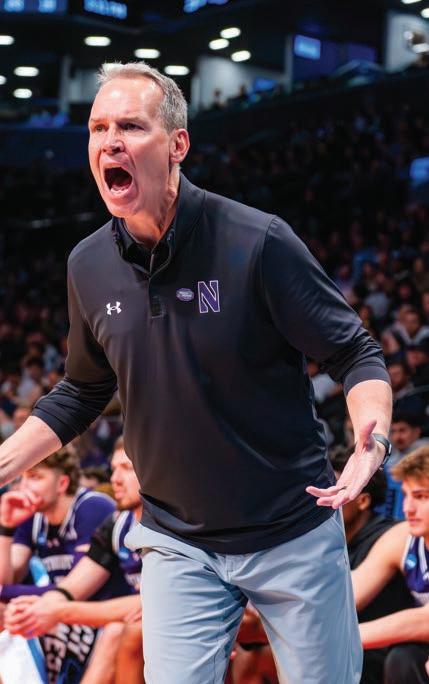
Collins at March 24 NCAA Tournament Round of 32 where Northwestern fell to UConn with a final score of 75-58.
Northwestern students — and young Americans nationwide — express increasing dissatisfaction with the political system.
WRITTEN BY GABBY SHELL // DESIGNED BY ALLISON KIM

setting up a hammock on the Lakefill or playing Spikeball in the fraternity quad, SESP third-year Hana-Lei Ji stationed herself in front of Sargent dining hall with a protest sign.
Students Organizing for Labor Rights (SOLR) was leading a demonstration highlighting the working conditions of dining hall staff contracted through Compass Group. While fellow SOLR organizers entered the dining hall to start a walk-out, Ji stayed outside.
Between cries of “overworked and underpaid,” Ji directed students away from the dining hall, informing them of the ongoing protest and Compass Group’s
“One person just laughed at the idea, and then he walked inside,” Ji says.
Northwestern organizers for social justice causes and political campaigns often run into this issue. Across campus, sentiments range from disillusioned to dissatisfied to entirely disinterested.
National politics face the same problem. Democrats and Republicans rarely agree these days, but they are aligned on one thing: the central role young voters will play in the 2024 presidential election. According to FiveThirtyEight, if the 18- to 29-year-old vote shifts just five percentage points to former President Donald Trump, it could hand him the election.
media regulation, the war in Palestine and Israel and the state of the economy, young Americans are turning away from Washington — and Northwestern students are no exception.
At Northwestern and other elite universities, students often feel pressured to maximize their opportunities to further their careers. Because of this career-
“It’s kind of destroyed any illusion I’ve had that we have a democracy.”
Alex Neuser Bienen second-year
driven mentality, Northwestern students are often stereotyped as politically unmotivated, SESP second-year Anusha Kumar says.
Both Kumar and Ji, along with Bienen second-year Alex Neuser, are part of the broad activist coalition between Fossil Free Northwestern, SOLR, Students for Justice in Palestine (SJP) and Jewish Voices for Peace (JVP).
On April 15, one of Northwestern’s two Wildcat Days for admitted students, the four social justice groups, alongside Educators for Justice in Palestine (EJP), organized a “day of action” to highlight the University’s connections to settler colonialism, worker abuse, environmental injustice and “the ongoing genocide in Gaza,” Kumar says. Since the Hamas attack on Oct. 7, 2023, more than 35,000 Palestinians and 1,100 Israelis have been killed, according to Al Jazeera
Ten days after the day of action, Northwestern activists led by SJP, JVP and EJP set up an encampment for Palestine on Deering Meadow, dubbed the “Northwestern Liberation Zone.” Organizers announced they would not leave the meadow until the University met the demands listed in the Northwestern People’s Resolution, including divesting from Israeli institutions and protecting pro-Palestinian speech. The encampment was part of a wave of anti-war protests on college campuses following the arrest of over 100 students at Columbia University
for erecting a pro-Palestinian encampment on the University's central lawn.
The encampment, home to over 1,500 protesters and 100 tents at its zenith, lasted five days. On April 29, Northwestern officials announced an agreement with encampment organizers. In exchange for removing all tents aside from one aid tent from the lawn, Northwestern promised full disclosure on all investments and guaranteed protesters’ rights to remain on Deering Meadow through June 1. The University also committed to expanding resources for Palestinian, Muslim and Middle-Eastern and North African (MENA) students.
Despite their work to engage with both campus-wide and global conversations on politics and policy, these organizers are part of the Generation Z cohort that is increasingly frustrated with American government and presidential politics. Although Kumar, Ji and Neuser all profess deep disapproval for Trump, they struggle to support President Joe Biden given his continued support for Israel.
Kumar says she has been disillusioned with the national government for a while.
“When I look at the future, I don’t necessarily see either party representing my interests or the interests of most people,” she says.
For Neuser, the 2024 election reveals a fundamental failure at the core of the American political system.
“It’s kind of destroyed any illusion I’ve had that we have a democracy,” he says. “Trump versus Biden is just two really bad things.”
Neuser says an America under Trump and the current Republican party “would be fascism.” Still, after voting “uninstructed” in the Wisconsin Democratic primary, an option that many pro-Palestinian voters used to express their discontent with Biden, Neuser is wrestling with how to vote in the general election.
“It sure as hell isn’t going to be Trump, I’ll tell you that,” he laughs. “But do I vote for Biden or not?”
Both Ji and Kumar weighed their options similarly. Ji is unsure who she will vote for but notes “there would be a lot more work to do if Trump gets elected.”
Kumar plans to vote down-ballot but is unsure whether she will cast a vote in the presidential election. Unlike Neuser and Ji, she rejects the “lesser of two evils” paradigm.
“I don’t necessarily see [Biden] being, in a lot of ways, better than Trump, because we’re still funding these wars,” Kumar says. “We’re still committing human rights violations.”
Oftentimes, she says the media pushes the “lesser of two evils” argument to pressure people into voting for Biden when his policies may not merit their vote.
Frustration with the national government is leading some students to abstain from the 2024 presidential election altogether.
Weinberg second-year Ryan Sjobeck, a founding member of the Northwestern chapter of Young Americans for Freedom, says neither major party candidate is a


good option — Trump leans into the “cult” rhetoric, and Biden concedes too much to the progressive arm of the party, he says. Sjobeck is currently planning on writing in his vote, though he says he is open to changing his mind if either candidate makes a concerted effort to curb some of their
For Melissa Duda, a second-year in the Plant Biology and Conservation graduate program, the war in Palestine and Israel is the most important issue. Because none of the major presidential candidates support an immediate and lasting ceasefire in Gaza and an end to aid for Israel, she says she cannot in good conscience vote in the 2024 presidential election.
“We should look to candidates that are moral and ethical,” Duda says.
But not all students agree. Medill firstyear Eli Kronenberg says the only moral choice in 2024 is to vote for Biden. For those who disagree with Biden’s policy
record, Kronenberg highlights the danger of a Trump presidency, recalling Trump’s comments on becoming a dictator if he were to win in 2024.
“If you want the chance to vote for someone you do like in 2028,” Kronenberg says, “then it is absolutely imperative that you vote for Biden this year.”
Overall, Northwestern students seem to agree with Kronenberg’s assessment. In a North by Northwestern survey with a sample size of 103, 76% of voting-eligible respondents indicated they planned to cast their ballot for Biden — albeit often begrudgingly. Students on average ranked their satisfaction with the 2024 presidential candidates a 2.6 out of 10. When asked to describe their feelings on the upcoming election, 32% of students responded with frustration, 27% with worry and 22% with hopelessness.
Young voters are by no means the only ones dissatisfied with the 2024
presidential options. A significant section of the electorate is unhappy with both choices: 29% of Americans believe neither candidate would be a good president, according to a March Gallup poll. But young voters seem more likely to check out from the election altogether. According to an April poll by the Harvard Institute of Politics, less than half of eligible voters aged 18 to 24 are “definitely” planning to vote, nearly a 15% drop from polling before the 2020 election.
In a five-way general election matchup, the spring Harvard Youth Poll found Trump and Biden each won 26% of the 18-to-24 vote. The rest of the sample either didn’t know who they would vote for or chose one of the three third-party candidates listed.
Larry Stuelpnagel, Northwestern professor of journalism and political science, explains this uncertainty with the political turmoil of the last decade. Rather than being too young to understand the gravity of the election, he says, Americans aged 18 to 22 have grown up in a world where people’s bodily autonomy is being stripped by courts and politicians alike, economic inequality grows without bounds
In a North by Northwestern survey with a sample size of 103, 76% of votingeligible respondents indicated they planned to cast their ballot for President Biden.


and legislators increasingly treat politics as a spectacle, refusing to even communicate across the aisle.
“That creates a disillusionment that I think can affect voter turnout,” he says, “and it can affect just the overall attitudes toward government in this country.”
To engage increasingly disillusioned demographics, political pundits and candidates have been playing up the existential nature of the 2024 election. Both Biden and Trump have suggested their opponent’s victory would threaten democracy as we know it. But Kellogg School of Management Ph.D. candidate Trevor Spelman says this may be less of a fundamental truth than a political tactic for voter mobilization.
“As we approach election season, political elites on both sides are playing up the differences in parties as

fundamental and threatening in order to coalesce their groups,” Spelman says, adding this has contributed to the increase in American polarization over the past few decades.
Northwestern psychology and Kellogg management and organizations professor Eli Finkel has found that, since 2012, Americans feel a stronger sense of hatred for people in the other political party than love for those in their own party. Oftentimes, partisan Americans will also significantly overestimate differences across the aisle. For example, Americans estimate 32% of Democrats identify as LGBTQ+, when only 6% actually do, according to a 2016 study by the University of Chicago.
The fusion of entertainment, media and politics has played a major role in creating this increasingly polarized society, Spelman says. As one of Finkel’s Ph.D. students, Spelman is currently involved with research at Kellogg that aims to develop social media algorithms with less pattern-reinforcing methods for sharing news. He points to the development of explicitly party-aligned media — MSNBC for Democrats and
Fox News for Republicans, for example. These channels, a product of the 24/7, profit-driven news model, push the most outraging and divisive content to maximize viewership, Spelman says.
For Stuelpnagel, though, there was a clear difference in reporting ethics between MSNBC ’s nighttime commentary and Fox News
He says MSNBC does “tilt left,” but they fact-check and challenge their sources. Fox News , on the other hand, “is a propaganda arm of the GOP.” He says Fox regurgitates lies unquestioned and packages them to viewers as journalistic truth. The Media Bias/Fact Check website rates MSNBC ’s overall credibility as medium and Fox News ’s as low.
As trust in the media is at a record low, though, any partisanship or deviance from strict fact can damage the credibility of the entire field of journalism. An October 2023 Gallup poll found 39% of Americans had no trust in mass media to report the full and fair truth. Stuelpnagel says consuming a variety of news media is crucial to decreasing partisanship and increasing trust in national media. But getting people to change their ways of consuming and thinking about news is no easy task.
“You don’t change people’s viewing habits overnight,” Stuelpnagel says. “People get attached to other people. In part, it’s a personality-driven business. Getting people out of those trenches is going to be very hard.”
But as people increasingly get their news from social media apps, efforts by major news networks to maintain viewership may be in vain. Partisanship, misinformation and intransigence reign supreme on these apps without the traditional guardrails of journalistic objectivity.
“The attention-based economy is amplified to the absolute max social media,” Spelman says.
Citing research from Kellogg

“I lose sleep over a
I will just do everything I can to ensure he is not elected.”
Adam Durr Weinberg second-year
professor William Brady, Spelman says social media is particularly adept at “hijacking” our evolutionary tendencies because it frontloads prestigious, ingroup, moral and emotional (PRIME) content. This content is especially salient because it capitalizes on our inherent tendencies to seek out social approval for our thoughts and beliefs, Spelman says. Without proper methods of content moderation, exaggerations and fabrications often make their way through social media without significant fact-checking.
News article. But still, she says it is hard to avoid political content on social media. As someone center-left on the political spectrum, social media often makes her feel “not liberal enough.”
“A lot of the time, social media in particular makes me second-guess what I believe in,” she adds.
Getting people to engage with opinions across the political divide without forcing them to give up their own convictions is a key objective of a new Kellogg initiative. The Center for Enlightened Disagreement, announced in February, was initiated by Finkel and fellow Kellogg professor Nour Kteily to study and implement new methods of productive disagreement in classrooms, corporations and society.
Unlike other initiatives surrounding conflict resolution, the Center for Enlightened Disagreement isn’t just looking to change people’s opinions of each other through dialogue.
“It’s not just how much people dislike one another, but how much are they learning from the interaction?” Kteily says. “To what extent is their understanding of the views of the other side greater than it previously had been? How much passion are they retaining for their cause?”

have a robust disagreement even in mock negotiations, a term they coined “Kellogg nice.”
“Students have learned that it is easier to bite their tongue and go along with stuff as opposed to bringing up the disagreements and dealing with it forthrightly,” he says.
As the Center for Enlightened Disagreement develops, Kteily says, there is a four-pronged set of goals: building a scientific foundation for enlightened disagreement, translating that research into curriculum for both graduates at Kellogg and undergraduates across Northwestern, creating a national conversation on managing disagreement in professional and government settings and engaging with the “real world” through op-eds and book and speaking engagements.
While early in the process, Finkel and Kteily are in conversation to develop a pilot undergraduate curriculum that will hopefully be implemented this fall. This new curriculum isn’t only exciting to those developing it: Students expressed interest in the administration embedding instruction on positive disagreement into undergraduate classes.
By expanding how we look at disagreement in and out of the

cultivate different values of care and foster them a little more.”
Ultimately, Kteily believes implementing this curriculum in both the undergraduate and graduate spheres will make students more aware of their unconscious biases and motivations. By teaching students to step outside of their initial reactions and examine disagreements from a more removed position, he hopes students will avoid the common trap of demonizing their opponents.
“I’d like them to be able to carefully categorize and characterize how they think [and] why their counterpart might disagree,” he says. “I’d like that to be accurate. And, ideally, I’d like that to not require them to just moderate their views.”
While students and professors disagreed on exactly how to solve the problem — from critically engaging in discourse across political parties to organizing outside of party lines altogether — everyone agreed
something needs to change to curb disillusionment. For Weinberg second-year Emilie Tueting, engaging young voters is critical.
“We are all super opinionated, we care a lot about the world and it affects us the most, and yet not everyone is voting,” she says.
Tueting was involved in “get out the vote” campaigns for Democrats in the 2020 election. As a high school senior, she traveled to the University of Virginia to encourage college students to vote in both national and local elections. This summer, Tueting hopes to work with the Democratic Party, canvassing and talking to young potential voters.

“Voting is such a privilege, and if you have the ability when so many people have been disenfranchised, then I feel like it’s very important to vote, not just for yourself but for those people,” she says.
Weinberg second-year Adam Durr, co-president of the Northwestern College Democrats and co-founder of the Illinois chapter of College Democrats, has campaigned for Biden on campus and around Chicago. Most young people he’s talked to, he says, have expressed deep disillusionment with national politics and Biden, particularly given the war in Palestine and Israel — something he says the Democratic Party has largely ignored. While Durr mostly agrees with his progressive peers, he says he views it as his duty to campaign for Biden as the only viable non-Trump candidate.

“I lose sleep over a Trump presidency,” he says. “I will just do everything I can to ensure he is not elected.”
But he rejects the argument coming from
simply because Trump is a worse alternative. Instead, Durr says, young Americans should vote and engage in politics because of their frustrations with the state of the world.
“You can’t turn away from politics,” he says. “You have to do the opposite. You have to get more involved. Do what you can to push for these things that [you] care about.”
“We are all super opinionated, we care a lot about the world and it affects us the most, and yet not everyone is voting.”
Emilie Tueting Weinberg second-year
















Rock out with Northwestern’s graduating student bands.
BY JULIANNA ZITRON // DESIGNED AND PHOTOGRAPHED BY ALLEN YOU


he vibrations of Weinberg fourth-year Zeki Hirsch’s and Communication third-year Sam Marshall’s guitars electrify the room.
The room in question: a damp basement on Maple Avenue.
There is no stage, and rainbow Christmas lights take the place of spotlights. The crowd is packed in like sardines, but their cheers prove no one seems to care. As McCormick fourth-year Liam Warlick joins in with his bass, the crowd stirs, ready for the music to fill up the room. All it takes is Weinberg third-year Leo McKenna to start banging on the drums for the pent-up energy to release in a sea of moshing and headbanging.
Hirsch, Marshall, Warlick and McKenna make up Sapphire Man, which they describe as Northwestern’s premiere “electrician rock” band. Its members have a combined 50-plus years of experience playing music. For Sapphire Man, music is not just something they study or listen to for fun. It’s an essential creative outlet.
A select few Northwestern students with musical talent and a zeal for performance come together to form student bands. These groups perform wherever they can, whether it’s a school event, a backyard tailgate or a bar. Many college bands come and go — the time commitment and equipment costs are high and graduation places an expiration date on many groups. But for band members, it’s worth it to have a space to play music and share it with others.
That is the motivation for Jenna Kopp (Weinberg ’24). She says she can hardly recall the time before she was making music with her sister and dad.
When Kopp got to Northwestern, she knew she needed to find a musical outlet. She was a member of the a cappella group Northwestern Undertones, but she says she always kept the idea of starting her own group in the back of her mind. Finally, at the end of her junior year, she and Weinberg fourth-year Peter Sheldon turned that idea into a reality. All that was left to do was find bandmates.
“We were practicing in Peter’s basement and Blake came down the stairs with his keyboard and was like, ‘Can I jam with you guys?” Kopp says.
Slowly, Kopp, Sheldon and McCormick fourth-year Blake Frank recruited a few more members to their band, which Kopp named Office Hours.
“It was really hard to find people to play all the different instruments,” Kopp says. “Everyone sings and a lot of people play guitar, but to find someone who plays the drums and someone who plays the bass and people who have equipment and places to practice, it’s pretty challenging.”
One of the newest recruits was Warlick, who became the band’s bassist at the start of this school year. Warlick, who himself plays in three bands, describes Northwestern’s band scene as “incestuous.”
“Everyone is in everyone else’s band,” Kopp says. “I don’t think anybody is in just one.”
Office Hours has had some band members leave, either to start a new band or following their graduation, and has added new members over time. Kopp says as the people in the band change, the vibe of the group shifts too. She says Office Hours became much more serious once Warlick joined.
“At first we were hanging out, friends jamming — and it still is that, but I feel like everyone takes the music more seriously now, which is really cool because we’ve been able to learn more challenging songs, just a bigger variety of music,” she says.

Communication fourth-year Judy Lawrence found her place in the Northwestern music scene via an ad posted in Plex for a band called safety scissors. In the spring of 2022, she met Weinberg fourth-year Hope McKnight and McCormick fourth-year Maddie Farr in the Slivka basement for a casual jam session. Lawrence says the three of them clicked pretty quickly, and now they plan to be roommates in Chicago postgraduation. A year later, in the spring of 2023, Weinberg third-year Anika Wilsnack joined as the drummer.
Lawrence describes safety scissors as a mix of the members’ music tastes: indie rock with a little bit of punk and alt-rock. This influence shines through in the songs the band chooses to cover, like “Misery Business” by Paramore, or in their original songs, like “She’LL Hate For You.” Both Lawrence and Farr write songs for the band to play, something Lawrence had never tried before joining the group.
“It is more fun to play originals,” she says. “There’s no one for me to compare myself to because we’re the ones creating it.”
Weinberg fourth-years Jadyn Stewart and Laila Skramstad formed their band, Small Companion, to play their original songs. The two met at a meeting for the Songwriters Association at Northwestern (SWAN) as second-years and have written seven original songs together. They perform with McCormick fourthyear and guitarist Max Ward, Weinberg

fourth-year and bassist Ellie Lyons and McCormick fourth-year and drummer Luke Carlson.
“Laila and I started writing together just as a creative outlet,” Stewart says. “Eventually, when we had a handful of songs, we were like, ‘Well, we have them, let’s do something with them.’”
Stewart and Skramstad have both written songs since elementary school. Stewart recalls writing and singing songs to herself on the playground and can still be found scribbling lyrics in the margins of her notebooks.
Sapphire Man also has a collection of original songs they recently released in their debut album Down and Out Marshall and Hirsch both wrote songs for the album, but their approaches to songwriting were totally different. Marshall describes his songwriting process as “music first,” where he will come up with a chord progression and slowly form the melody. Then he writes the lyrics, taking inspiration either from something he has read or watched or from his own life experience. Hirsch, on the other hand, is a lyricist first.
“I’ll usually write something in the form of poetry and then I’ll adapt it to a chord progression,” he says.
Down and Out was released in February and received over 2,000 streams on Spotify in its first week. For the band, the album is like a trophy, or as Warlick explains, “concrete evidence that this existed.”
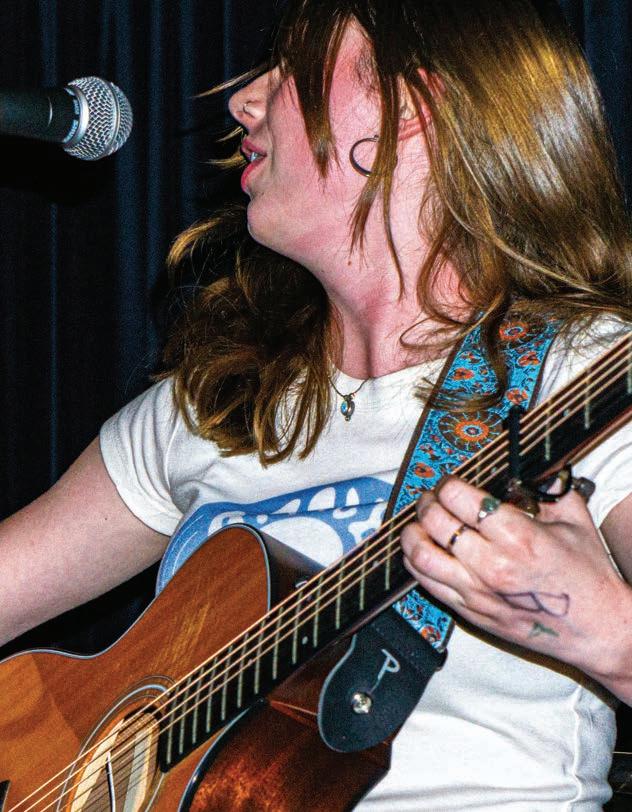
It’s a windy day in April as Kopp prepares for Office Hours’ rehearsal. She places several electric cords into a tote bag, packs up her guitar and throws on her brown, fringe-lined jacket. She meets Warlick outside an apartment on Clark Street and they head to the basement to meet Carlson, who also drums in Small Companion, and Weinberg third-year and guitarist Thomas Silberberg. Not a member of Office Hours, Silberberg is stepping in today in place of Ward.
As the musicians tune their instruments, they catch up about what they did last night. This practice isn’t for any upcoming gig in particular, just an excuse to jam together.
“It just kind of depends on our calendar of when we’re going to have gigs and how much free time people have,” Kopp explains. “The more people that we have in the band, the harder it gets, but it is nice because we have subs for each position now.”
safety scissors usually practices once a week, which Lawrence says can be hard to manage, though she finds it enjoyable. Last year, Lawrence and the band would practice almost every day the week leading up to a gig.
Kopp was initially worried about the time commitment of starting a band when Office Hours first started. This is no longer a concern for her.
“I will always make time for it,” she says. “Even if I’m really busy, I will make time for the band because I love making music so much.”
On top of the demanding time commitment the band requires from each member, the logistics of finding a practice space and gigs add challenges. Members of all four bands emphasize that Northwestern makes starting and maintaining a band difficult with the limited practice space.
Only Bienen students can access practice rooms, so while living on campus, the bands would have to rehearse in places like Kresge or the basement of Plex. To make matters more challenging, finding equipment, especially a drum kit, proved to be a pain.
During the first rehearsal for Sapphire Man, McKenna was lucky to stumble
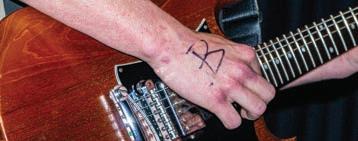
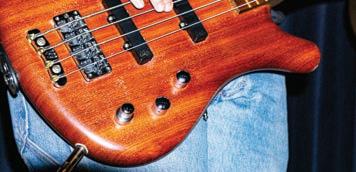










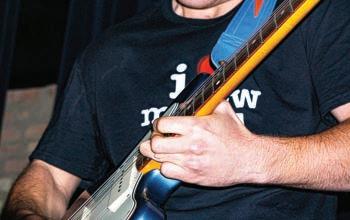







upon a drum kit stored in the Plex basement. The next time the band went down to practice, there was a sign on the kit that read: “Do not play.”
Now, as upperclassmen living off campus, the bands all find it much easier to practice together.
Finding places to perform is another obstacle, say Stewart and Skramstad.
Skramstad is the programming director for WNUR and has put together many events through the organization that her band plays, usually accompanied by a couple of other student bands.
“I hope in the future, after I graduate, they do more with student bands because I think it’s a great outlet,” she says.
Starting a band in college is often met with a harsh reality: College is not forever.
safety scissors is a rare case. With all three graduating members staying in Chicago, the band will continue to create together. Lawrence says they plan to put out their first EP by the end of the year.
All but one member of Office Hours is a graduating senior, heading to different places post-grad. Kopp is moving to San Francisco to pursue computer science, while Warlick is attending graduate school at UC Santa Barbara. Though Office Hours will be no more, after the band members leave Northwestern, they all plan to find ways to keep music in their lives.
“I would love to start a new band in San Francisco,” Kopp says. “I feel like it’d be hard to start from scratch, but it’s definitely something that I want to make the effort into doing.”
For Sapphire Man, the inevitable breakup was always in the back of their minds. With two juniors and two graduating seniors, the group agreed that creating their album was the best way to keep the band’s memory alive.
“We’re just going to try to go out with a bang,” Marshall says.

XOXO, Chitchat Wildcat
Unpacking my spiritual baggage
The aquatics center (of attention)
The Hangover Herald
58 59 60 61 62
Oh, the places we’ve gone!

Facing my truth. And yours.
Off-brand Gossip Girl here, your one and only window into the lives of Northwestern students. I love nothing more than eavesdropping, and you all have given me so much material that it would be a crime to gatekeep. (This is not problematic. I am a Sagittarius. Blame the stars!) In no particular order, here are some of the juiciest conversations Hangover has recently overheard on campus. Since so many of you are Legal Studies majors and I am frankly scared of you (I do not know what “libel” or “defamation” means, but you all just talk so fast it makes me nervous), I’ve anonymized our friends here. You’re welcome.
WRITTEN BY NATALIA ZADEH // DESIGNED BY LAURA HORNE
“He’s dating Blue, right?”
“No, he’s dating Orange now.”
“Oh, how’d they meet?”
“Orange is Blue’s roommate.”
Blue needs to write a memoir. Or at least a really good Instagram story.
“Purple is moving out of her dorm because her roommate Yellow refuses to sexile her.”
“Wait, that’s actually kinda considerate, I’m not following?”
“No, Yellow has sex when she thinks Purple is asleep.”
Kinky as hell.
“There are only three things in this world I need to be sober for: losing my virginity, exams and Kung Fu Panda 4.”
Believe it or not, this is actually the final verse of the Northwestern Alma Mater.
“One of my friend’s dads is, like, literally a mailman.”
Breaking News: Precocious Northwestern student gains class consciousness at the age of 21.
“But I can’t be homophobic, I’m like 10% bisexual.”
Rumor has it she threw the first brick at Stonewall.
“One of my friends has started to stalk our TA. Yesterday, she asked me if I wanted to come with her to watch him walk his dog around Long Field.”
Was the dog cute?
“She has to be bi, I saw her making out with a girl last year.”
Hypothetically speaking, if this quote were about me, I’d say that what happens in the basement of the frisbee house need not be shared with everyone at frat formal. But those are just my 2 cents. Hypothetically speaking.
“It’s not a drinking problem, it’s a drinking solution.”
It only counts as alcoholism after graduation, right?
Maybe some of you should consider shutting up. Just an idea. XOXO, Chit-chat Wildcat
Disclaimer: This is not a work of fiction. Any similarity to real persons, living or dead, is not a coincidence. Trust.


WRITTEN BY ZOE KULICK // DESIGNED BY JESSICA CHEN
After suffering a back spasm induced by my 75-pound JanSport, I committed to finally emptying my backpack. Of the nearly 100 knick-knacks I went through, there are a few pieces that certain zodiac signs would be particularly interested in taking off my hands.
Capricorn: Stolen first-year’s Wildcard
Capricorns, let this Wildcard be a lesson for your severe pessimism because I bet your overly suspicious mind is thinking I pulled some crazy stunt to obtain this contraband. But you’re wrong. I know you don’t understand social trust, but a lot of students leave their stuff out in public without a second thought. It was easy!
Gemini: Michelle Obama’s memoir, Becoming
Geminis, I implore you to feed your curious and intellectual minds with Becoming so you can gossip about Michelle Obama’s goals and accomplishments instead of spreading nasty rumors about your “best friend.”
Scorpio: Vibrator
Scorpio ... Scorpio ... Scorpio ... you sexy, dirty whore. I bet you can barely even keep it in your pants for 50 minutes while your Earth 101 professor talks about organisms and all you can hear is “orgasms.” Well, good news for you: Now you can quietly dip out of class (make sure to bring your bag with you — don’t worry, everyone will just think you’re on your period) and take care of the situation in the bathroom with your handy-dandy vibrator. Just make sure you don’t think so hard about cavemen — we all know the grizzled dominant type is your thing and the vibrator can only take so much before it needs a charge.
Aquarius: Deck of conversation starter cards
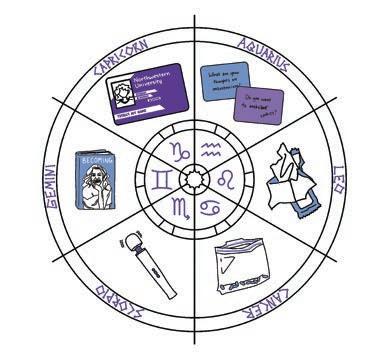
You may think you’re cool and chill because you share a zodiac sign with Harry Styles (which you won’t shut up about), but really, your detached, stoic demeanor makes you incredibly awkward. These cards are also great practice for the interviews you never get because no one likes your vibe. Since Leos don’t give a fuck about anyone or anything but themselves (including the state of their backpacks) and leave psychological messes everywhere they go, it’s only fitting they should be paired with the sticky, chocolatey mess that resembles the diaper of a baby with IBS.
Leo: Melted, half-eaten KIND Bar

Cancer: Ziploc bag of loose Advil
Sometimes we all just need a break from your complaining and crying. To address that, I give you Advil in a sandwich-size Ziploc, which you can take the second you feel even a tinge of a headache. Get rid of that clunky container! The child lock is slowing you down! Bonus points if you get one of my other medications that have made their way into the bag. Cancers, if you’re feeling especially moody and irritable (I bet you are!), then “accidentally” taking a Klonopin instead of ibuprofen will not only improve your day but also the days of everyone around you.
On second thought, no one will get anything from my backpack as I am too emotionally attached to part with even one of these items. In preparation for another spasm, I will just add some muscle relaxers to my Advil Ziploc. That’s right, I’m a Cancer! Could you guess?

WRITTEN
BENNIE GOLDFARB // PHOTOS BY JULIA LUCAS
Ipicked up my first arm floaties at the ripe young age of 3, courtesy of Foss Swim School in Minnesota. Unfortunately, I also dropped my last arm floaties at the ripe old age of 3.
Very little was learned in this short amount of time. Sure, the elementary backstroke got me through the swim unit in high school, but that’s about it.
My friends agreed I should learn to swim and pushed me even further (not physically, thank God) to overcome my greatest fear — heights — while simultaneously jumping into my secondgreatest fear — water.
I worried these athletic feats would trigger my third-greatest fear — having a heart attack. Still, we needed material for the Hangover section, so it must be created from thin air and my thin, thin body.
Unfortunately, this 5’8”, 120-pound boy forgot his Speedo in Minnesota. Fortunately, I outsourced this problem to the swim team and squeezed into the tightest tights I could find.
Open diving is only on Saturday nights and Sunday mornings. So, not unlike Jesus
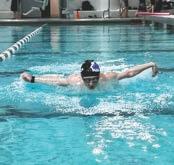


Christ himself, I rose bright and early to nail myself to my proverbial cross.
The plan was perfect ... until it wasn’t. I scanned my Wildcard and opened the pool doors, only to find a sign that read, “ATTENTION SWIMMERS: Pool Closed for Maintenance.”
After pleading with God (and texting a student manager), I received word that I could try directly after Evanston diving practice the next day.
On Monday at 6:45 p.m., I opened the door looking like Katie Ledecky and sauntered into unfamiliar territory to confront the Evanston Diving Club coach. I’m not sure what was said in our exchange (I blacked out), but it was along the lines of, “I really need to jump off the tallest board. I’m a writer for a distinguished magazine and this is groundbreaking reporting.”
I was given the OK and sent up the highest diving platform, following a 10-year-old girl who had the best diving form I had ever seen.
At the top, it felt like I was actually Jesus Christ and as high as the heavens (16 1/2 feet). But with all eyes (a single camera) on me, I jumped feet-first into the

Halfway through a “cannonball”
sparkling blue water. And no, my arms weren’t flailing.
A few seconds passed below the water where I experienced nothing short of bliss. I wasn’t sure if I was alive or dead as I had my eyes closed. But slowly, I surfaced and started swimming.
I was ripped out of this euphoric state by the diving coach yelling that I was swimming in the wrong direction.
His abrupt call-out didn’t diminish my spirit, though. Ready to give it another shot, I thought to myself, ‘Has anyone ever fucked up a cannonball?’
I may have been the first.
While every bone in my body believed I was in cannonball formation, photo evidence revealed the truth. Upright. Legs at 90 degrees. Picture the position you would shit in.
I wasn’t built for diving. But I still had my eyes set on a swimming experience. I’d heard the butterfly stroke is elegant so I tried my luck at it.
It turns out I preferred the elementary backstroke as a 15-year-old for good reason. With over three-fourths of the pool length to go, I had to stop to catch my breath — and to keep my protein smoothie down.
Twenty-three minutes, 207 calories burned and a max heart rate of 162 was enough to tell me I would never return to Norris Aquatics Center.
Four hours later my lip had started to form a hive on it, but I gaslit myself into believing this was a separate phenomenon not connected to my previous aquatic visit that day. It lasted over 24 hours and I couldn’t feel my entire upper lip at one point.
“Write poorly and tell the truth occasionally.” –
Local woman Julia Lucas and Random Guy No. 3 are to be married next week.
After a week-long courtship that the bride described as “too long,” the two will be wed next to the Lakefill rock where they got engaged yesterday. The ceremony is looking for an ordained minister and recommends all interested parties Google, “How to get ordained in Illinois to officiate a wedding.”
When asked about his feelings on the occasion, the groom said, “Julia who?”
In lieu of gifts, the bride asks that donations be made to the Julia Lucas Divorce Foundation to fund an Eat, Pray, Love trip to Ibiza.
Bennie Goldfarb, aged somewhere between 12 and 20, passed away on the Norris Aquatics Center diving platform. He left this world doing what he loved least: facing his fears. He will be remembered, if at all, as a person known for doing things, mostly in SPAC (which researchers found has nothing to do with his heart attack).
DRINK ME OR DIE

Hear ye hear ye, gigglemugs and weisenheimers.
In the midst of searching for old-timey nicknames (why do they all sound like slurs), I’ve found the time to round up some news. As my idol Joseph Medill always said,
Bennie, known to his enemies as Bennie, is survived (allegedly) by some loved ones. He will leave his off-brand Fitbit (he wanted people to know it’s called a “WHOOP”) to his roommate.
“It’s like I can still hear his voice behind me, telling me to edit his story for him,” distinguished Hangover editor Mya Copeland says.
A memorial service will be held next week. Mourners are
“Our magazine is on the brink of ruin, and it’s time to spice things up with a newspaper page.” Look no further than here for the top stories on campus. Here’s the scoop.

invited to bring donations, which will go toward the good cause of buying a life-sized Bennie statue.
A water bottle that will force me to be hydrated. REWARD: $10 and a stick of gum.
Window cleaner for Mudd Library. No birds allowed. REWARD: several concussed birds.
A Wall Street internship (with Blackstone, preferably).
REWARD: shoutout on my LinkedIn announcement.
HEAD. pleaseeeeee. REWARD: $10 and a stick of gum (it’s really all I have).
Dear Herald, I’m in a small friend group that survived freshman year. We thought we were going strong and nothing could stop us from annoying everyone around us in Periodicals with our cackles. But two people in our friend group just started dating. I’m worried it’s going to break up the squad. What should I do?
Desperately, Friend Groupie
Dear Friend Groupie, I have three words for you: Run. Hide. Fight. Best of luck, The Hangover Herald
Dear Herald, I’ve been hearing some weird noises, like aggressive pounding, coming from the dorm room next to mine. It gets really loud from about 10 p.m. to midnight. My neighbor keeps yelling, “Bloody hell, you’re a proper wizard!” He’s from London, so maybe it’s just a cultural difference. How do I politely tell him to be quiet and go to bed?
Awake, Annoyed Neighbor
Dear Annoyed Neighbor, The British are coming.
With revolutionary spirit, The Hangover Herald
Advertisement
The best things in life are on

(And by the way, your feedback and scores for Midterm 2 are ready.)
Oh, the places we’ve gone!
X marks the spots.
My favorite Lakefill rock (for crying).
Where my ultimate hookup would happen. (Mudd shower)
Where I took my first bong rip.
Where my Safe Ride dropped me off after I greened out on a Monday. night (Sheil Catholic Center)
WRITTEN BY HANGOVER EDITORS // DESIGNED BY JACKSON SPENNER ORRINGTON AVENUE
The bush I threw up in after going too hard at a Wednesday wine night.
STREET SIMPSON STREET RYAN FIELD RUBBLE
The street that I sprinted down when I ran away from the cops on Dillo Day.
The crosswalk where a guy touched my back to help me cross the street on move-in day. (We did in fact hook up. I credit the crosswalk.)
SHERMAN AVENUE
Where I saw my high school ex at a basement party. (he doesn’t go here.)
FOSTER STREET
Where I was when I received the Alert NU text. Run. Hide. Fight. (Deering Basement Bathroom, shitting myself both mentally and physically.)
Where I crashed a high school beach party right before all their parents picked them up.
Where I was when I found out my house burned down. (Willard 4ever)
Where I friendzoned a guy named N**** T*****. (Lou Malnati’s)
Where I spotted Jeff Bezos (pls sponsor us).
Where I would go when my roommate sexiled me. (Willard roof <3)
Where I would hook up when I couldn’t sexile my roommate. (1838 bathroom u are so kind.)
Where I saw a squirrel get decapitated.
Where a girl ended things with me by saying she just wanted to “keep swagging.” (Colectivo)
ho said Evanston was boring? This quarter, our five loyal Hangover readers are getting spoiled. In the spirit of oversharing, we’ve decided to confide some deeply personal things we’ve witnessed during our time in this quaint little Midwestern suburb, just because we love you all so much. If you want to further support the Hangover staff via Venmo or Cash App, we will love you even more. Promise.
WIf your name is P***** A****** and you’re reading this, meet me here at 9:27 p.m. on June 25, 2024. There I will give you your first clue.
Where I took my second bong rip. Where I took my third bong rip. (I was on a walk.)
Where I’ve seen someone get a blowjob in the bathroom. (Reza’s Restaurant)
